Hero Recipes
Dishes
that are good for people and for the planet!

For you, with our compliments from the team at allmanhall in collaboration with Foodsteps and other partners.



that are good for people and for the planet!

For you, with our compliments from the team at allmanhall in collaboration with Foodsteps and other partners.


allmanhall’s hero recipes meet both sustainability and nutritional guidelines. Here we explain the criteria we use to assess the recipes.
Carbon rating
All our recipes are analysed using Foodsteps, a carbon impact assessment platform. Most of allmanhall’s hero recipes are A or B rated by Foodsteps methodology, or align to the EAT-Lancet’s Planetary Health diet and the Paris Agreement’s target of limiting global warming to 1.5°C above preindustrial levels. We also know that animal proteins still have a place in modern diets. In the case of these recipes, we’ve worked to make sure the meal has fewer high-impact ingredients, without compromising on taste.
For more information about how these impacts are calculated, please view the Foodsteps methodology
Cooking methodology
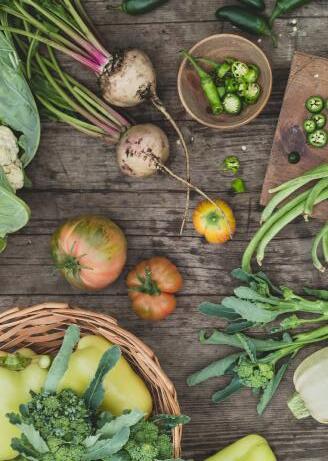

Both cooking methodology and ingredient sourcing have been developed to reflect averages. Therefore, the actual impact of your meals may be slightly different due to where your ingredients are from, and what you use to cook. To make the impacts of your meals bespoke to your operations, please contact allmanhall about onboarding with Foodsteps today.
All of the recipes are designed to reflect the season they were originally published in. Seasonal goods frequently have a lower planetary impact as the ingredients do not require freighting, which can be particularly detrimental by air. To ensure your meal aligns to the labels and associated planetary targets, try to follow the seasonal cycle of ingredients. For more information, please consult our seasonality guide which is available here.

Wherever possible, allmanhall recommends using ingredients that are accredited by higher standard schemes, to further lower the environmental or social impact of menu choices. These include:
Red Tractor – for British goods produced to a higher welfare standard. Learn more...
Rainforest Alliance – to support the protection of the world’s rainforests
Learn more...
Fairtrade – to support workers from developing nations. Learn more...
RSPO 100% sustainable palm for palm oil - to ensure no deforestation is caused by palm production. Learn more...
MSC or MCS for fish - to ensure fish/ sea products are sustainably sourced, and not from an over-exploited species. For more information: https://www.msc.org/uk/what-you-can-do/what-does-the- blue-msc-ecolabel-mean
https://www.mcsuk.org/goodfishguide/
Organic or regenerative agriculture - to help protect the soil and promote biodiversity. https://www.soilassociation.org/certification/food-drink/what-is-organic-certification/ https://regenorganic.org/
Nutrition
All our hero recipes are based on the Government’s Eatwell Guide but also the School Food Standards so are suitable to use in schools.
Eatwell Guide
The Eatwell Guide shows the different types of foods and drinks we should consume, and in what proportions to have a healthy, balanced diet.
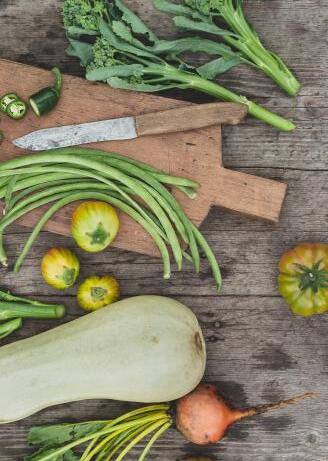


The Eatwell Guide shows the proportions of the main food groups that form a healthy, balanced diet:
• Eat at least 5 portions of a variety of fruit and vegetables every day
• Base meals on potatoes, bread, rice, pasta or other starchy carbohydrates, choosing wholegrain versions where possible
• Have some dairy or dairy alternatives (such as soya drinks), choosing lower fat and lower sugar options
• Eat some beans, pulses, fish, eggs, meat and other proteins (including 2 portions of fish every week, one of which should be oily)
• Choose unsaturated oils and spreads and eat in small amounts
• Drink 6-8 cups/glasses of fluid a day
• If consuming foods and drinks high in fat, salt or sugar, have these less often and in small amounts.
The Eatwell Guide, although followed primarily for health reasons, reduces the environmental impact of our diets in the UK by about a third on average.
All recipes are compliant with the School Food Standards, meeting the criteria and recommended portion sizes for both primary and secondary school pupils.
The School Food Standards were introduced in 2015 to transform what children eat in schools and how they learn about food. They are mandatory for all maintained schools, new academies and free schools, but optional for independent schools.
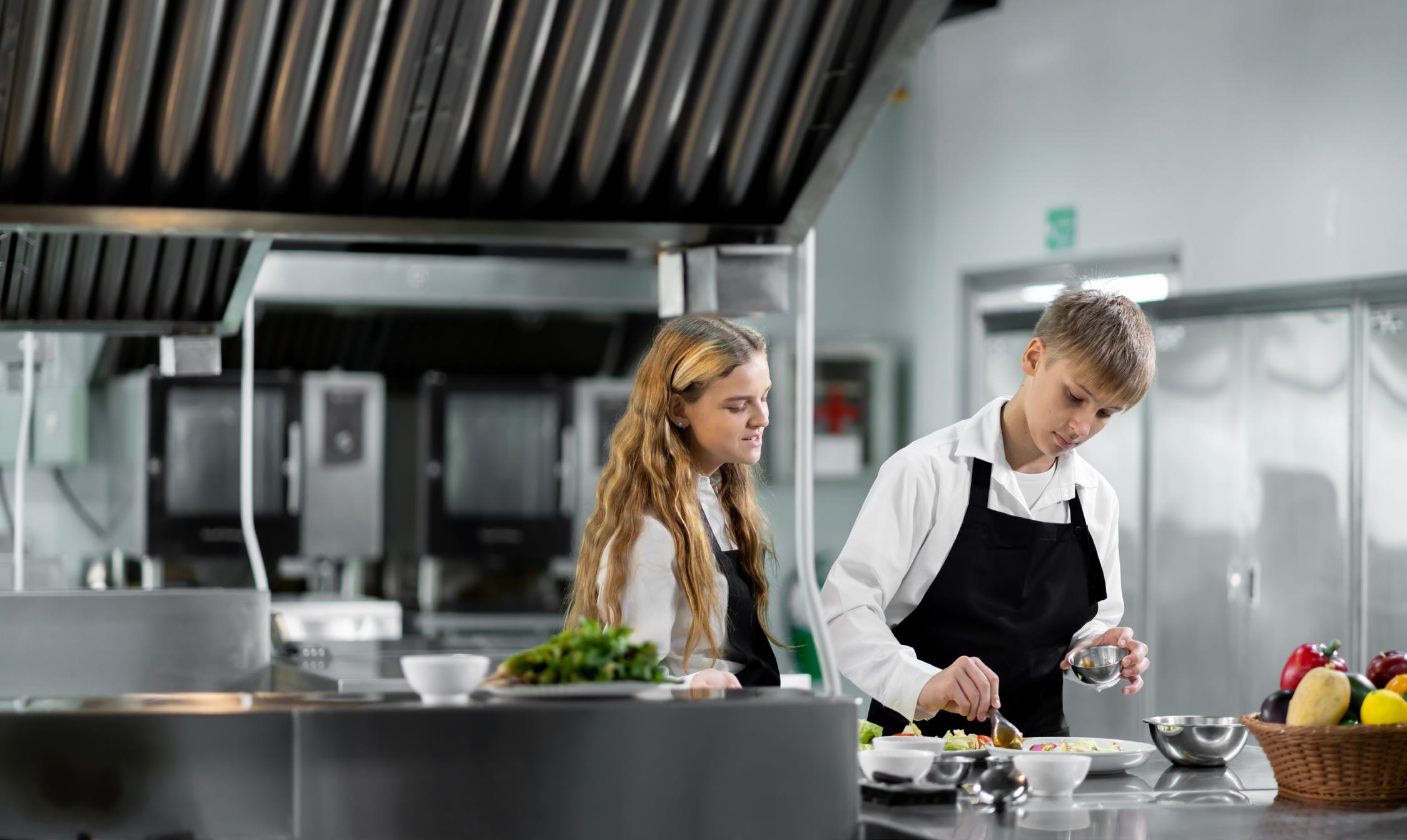
A meal must contain a portion of starchy carbohydrate, a portion of protein and at least one portion of vegetables:
Fruit and vegetables
• One portion of vegetable and fruit at each meal
Starchy food
• Starchy food cooked in fat or oil no more than two days each week (applies to food served)
• One portion of wholemeal carbohydrates once a week
Protein foods
• Oily fish needs to be on the menu at least once in a 3-week cycle
• Meat or poultry on the menu three times a week
• Non-dairy vegetarian option three times a week
• Processed meat / meat products no more than once each week in primary schools and twice each week in secondary schools
Foods high in fat, salt, sugar
• Pastry foods limited to no more than twice a week
• No chocolate or sweets allowed at any time
• No more than two portions a week of food that has been deep-fried, batter-coated or breadcrumb-coated (applies across the whole school day)
• Starchy food cooked in fat or oil no more than two days each week

Authors:

Tess Warnes
Dietitian allmanhall

Richard Dowling
Sustainability Manager allmanhall
Read on to see our School Food Standard compliant Hero Recipes...
Primary School: 10 portions | Secondary School: 7 portions
Prep time: 10 mins
Cook time: 40 mins
Total time: 50 mins
Ingredients:
• 20ml vegetable oil
• 100g onions
• 100g carrots
• 20g garlic pureé
• 600g chopped tomatoes
• 100g tomato pureé
• 50g granulated sugar
• 50ml malt vinegar
• 20g basil
• 25g GF vegetable bouillon
Method:
1. Place the oil in a pan and heat gently.
2. Finely chop the vegetables.
3. Then add the onions and carrots and cook till tender.
4. Add the tomatoes, tomato pureé, sugar, vinegar, basil and stock, then bring to a boil.
5. Allow to simmer until the soup reaches the correct consistency, then blend until smooth.
This recipe was provided by Bidfood. They have over 1,000 recipes available on their website:
https://www.bidfood.co.uk/inspiration/recipes/


Image for illustrative purposes only.


Primary School: 10 portions | Secondary School: 7 portions
Prep time: 10 mins
Cook time: 40 mins
Total time: 50 mins
Ingredients:
• 20ml vegetable oil
• 100g onions
• 200g potato
• 1 butternut squash
• 30g garlic pureé
• 60g clear blossom honey
• 35g GF vegetable bouillon paste
Method:
1. Place the oil in a pan and gently heat.
2. Chop the vegetables.
3. Then add the onions, potato, garlic and squash in a pan and cook for a few minutes until they start to become tender.
4. Add the vegetable stock and honey and bring to the boil. Allow to simmer until the vegetables are soft.
5. Then place the soup in a blender and blitz until smooth.
This recipe was provided by Bidfood. They have over 1,000 recipes available on their website:
https://www.bidfood.co.uk/inspiration/recipes/


Image for illustrative purposes only.
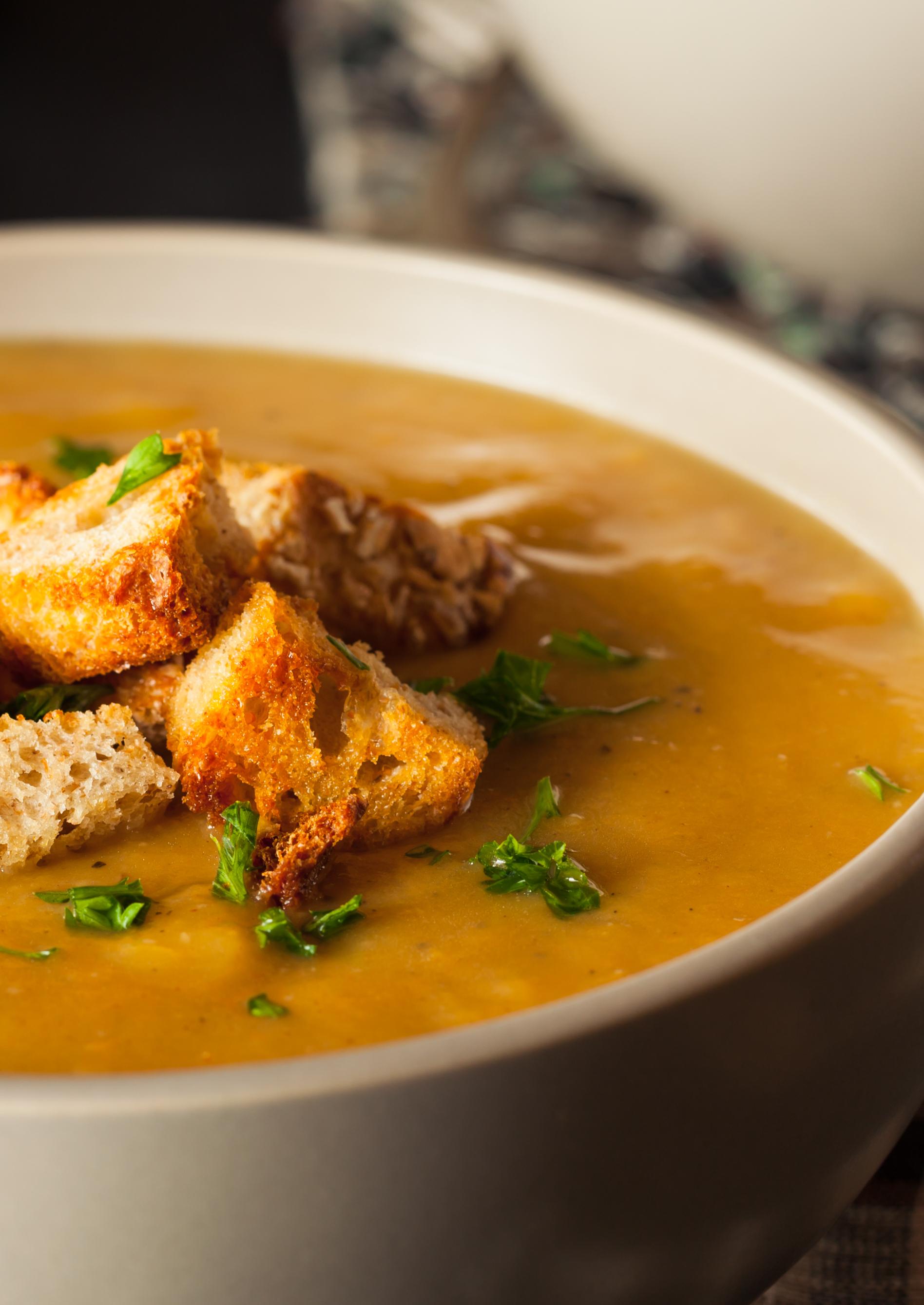
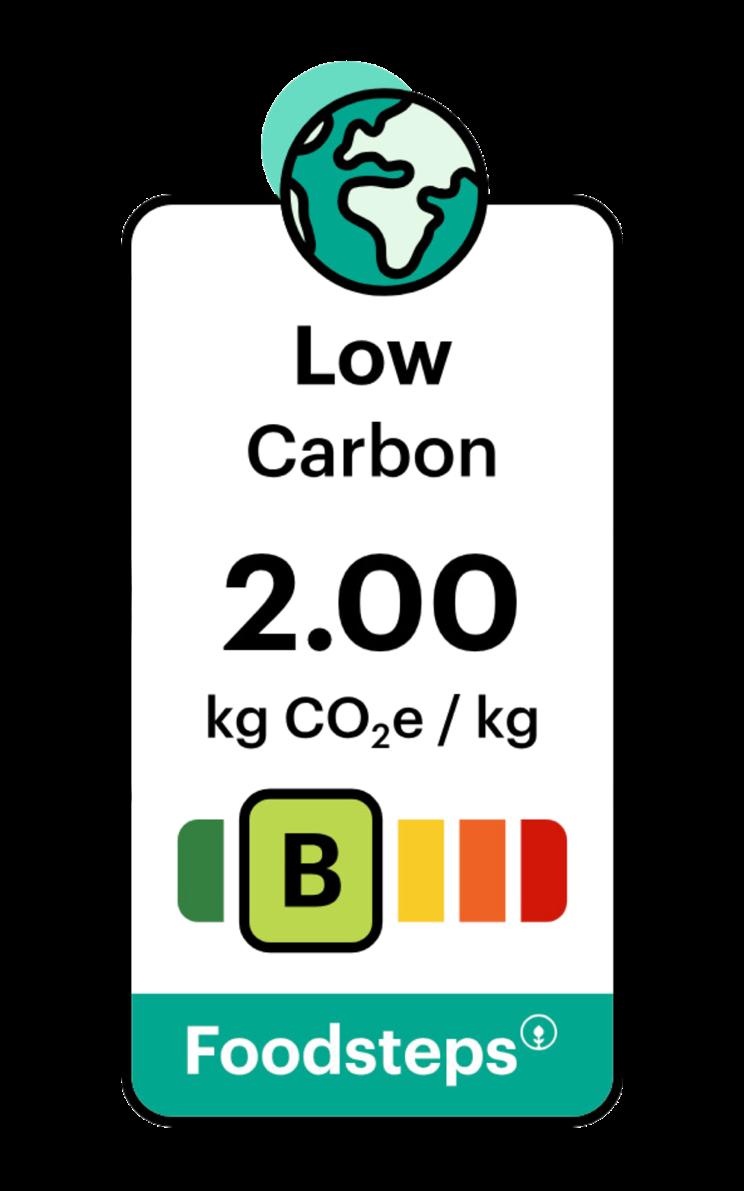
Primary School: 10 portions | Secondary School: 7 portions
Prep time: 5 mins
Cook time: 45 mins
Total time: 50 mins
Ingredients:
• 100g diced white onion
• 20ml rapeseed oil
• 2 free range chicken breasts, chopped into small pieces
• 150g curry paste
• 400g chopped tomatoes
• 400g coconut milk
• 250g red lentils
Method:
1. Place a large saucepan on a medium heat and add some oil.
2. Fry the onion for at least 5 minutes until softened.
3. Add the chicken and stir for a few minutes.
4. Add the curry paste and mix to coat the chicken and onion. Stir for 5 minutes.
5. Add a tin of chopped tomatoes, then fill the tin with water and add it to the pot. Add a tin of coconut milk and the red lentils.
6. Cook on a low heat on the hob or pop into an oven at 160°c for about 30 minutes until the chicken and lentils are cooked.
7. Serve with basmati rice, naan bread and mango chutney.

The mix of chicken and lentils helps reduce the carbon rating, adds extra fibre, and reduces the overall cost of this meal!
This recipe was provided by allmanhall's charity partner, Jamie's Farm. They transform lives through a unique residential programme built around the core elements of Farming, Family, Therapy and Legacy.
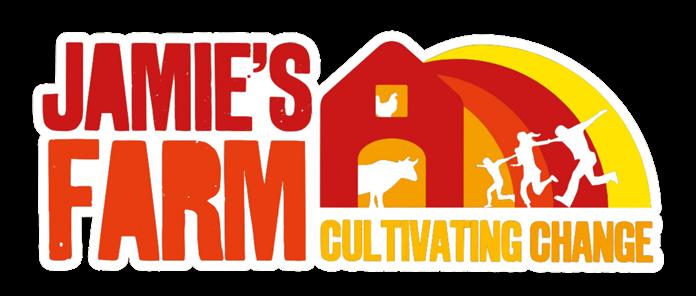


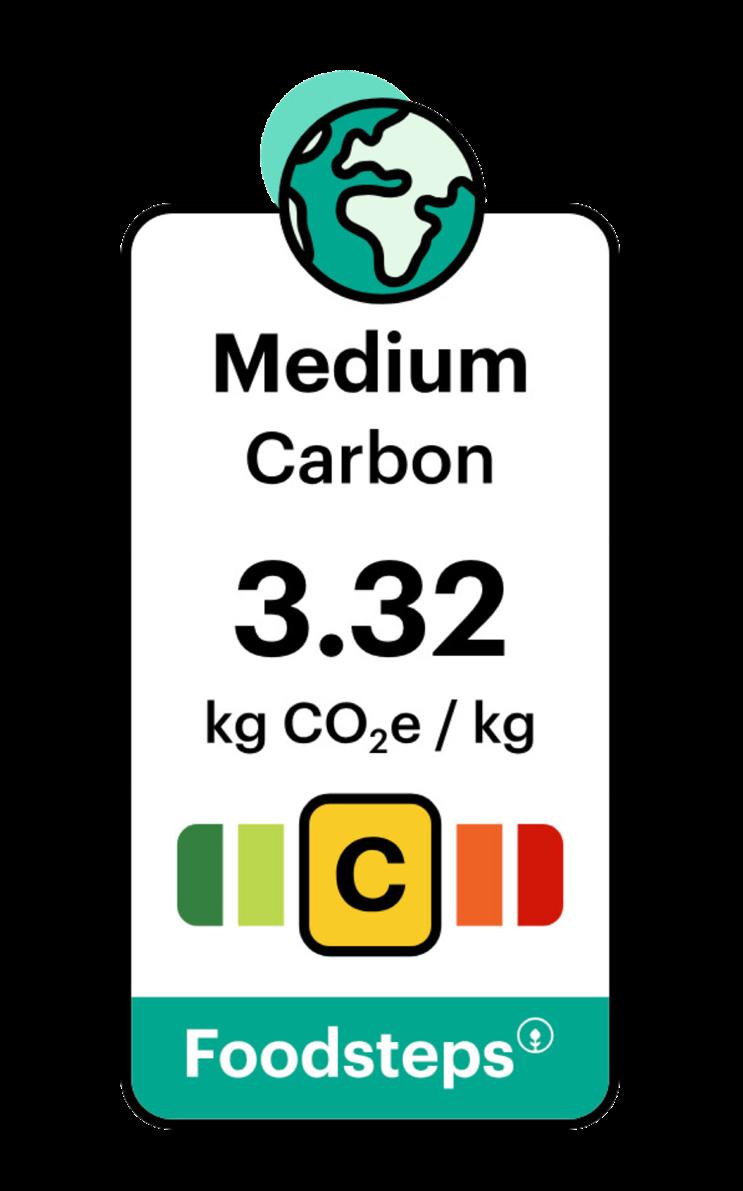
Primary School: 10 portions | Secondary School: 7 portions
Prep time: 20 mins
Cook time: 20 mins
Total time: 40 mins
Ingredients:
• 1.2kg potatoes
• 50ml whole milk
• 20g parsley
• 100g garden peas
• 650g salmon
• 2 medium eggs
• 100g natural breadcrumbs
• 50g plain flour
Method:
1. Place the potatoes in a pan of cold water and boil until tender.
2. Drain the potatoes and place a bowl with the milk then mash until a smooth texture is achieved.
3. Finely chop the parsley and add to the potato mix along with the peas. Mix well.
4. Flake the salmon and fold through the potato mix. Shape into 10 fishcakes (7 for secondary) and place on a tray.
5. Take the fishcakes and roll them in the flour, followed by coating in egg mix.
6. Roll the fishcakes in the bread crumbs and place on a oven proof tray.
7. Bake in the oven at 200°c for 20 minutes until golden brown, reaching a minimum core temperature (75°c).

Whilst this dish has a carbon rating C, oily fish is important to include in the diet and as part of the school food standards. Ensure any fish used is sustainable.
This recipe was provided by Bidfood. They have over 1,000 recipes available on their website:
https://www.bidfood.co.uk/inspiration/recipes/


Image for illustrative purposes only.


Primary School: 10 portions | Secondary School: 7 portions
Prep time: 15 mins
Cook time: 1 hour 10 mins
Total time: 1 hour 25 mins
Ingredients:
• 150g white onion
• 250g minced beef
• 20g garlic pureé
• 125g red lentils
• 700g chopped tomatoes
• 30g tomato paste
• 8g mixed herbs
• 250g lasagna sheets
• 375ml whole milk
• 30g butter spread
• 30g plain flour
• 100g white cheddar

Method:
1. Heat your saucepan, add the mince and fry until golden. Drain the fat and add the onions and garlic, cook for 5 minutes.
2. In a seperate saucepan, cook the lentils until soft. Drain well and add to the sauce with the cooked beef mince.
3. Add the tomatoes, tomato pureé and basil. Cook for 15 minutes then simmer for 30 minutes.
4. Make the bechemel sauce by melting the butter, adding the flour and cooking for 5 minutes, slowly adding the milk until it is all incorporated and smooth.
5. Start to build the lasagne by layering up the bolognese and the lasagna sheets. Once this is done, ladle over the bechemel sauce and finish with grated cheese. Bake in the oven for 40 mins at 170°c.
This recipe was provided by Bidfood. They have over 1,000 recipes available on their website: https://www.bidfood.co.uk/inspiration/recipes/ A full beef lasagne would produce 11.15kg CO2e with an ‘E’ rating. By swapping out 50% of it with lentils, you are reducing the carbon emissions of this dish by 35%.


Image for illustrative purposes only.

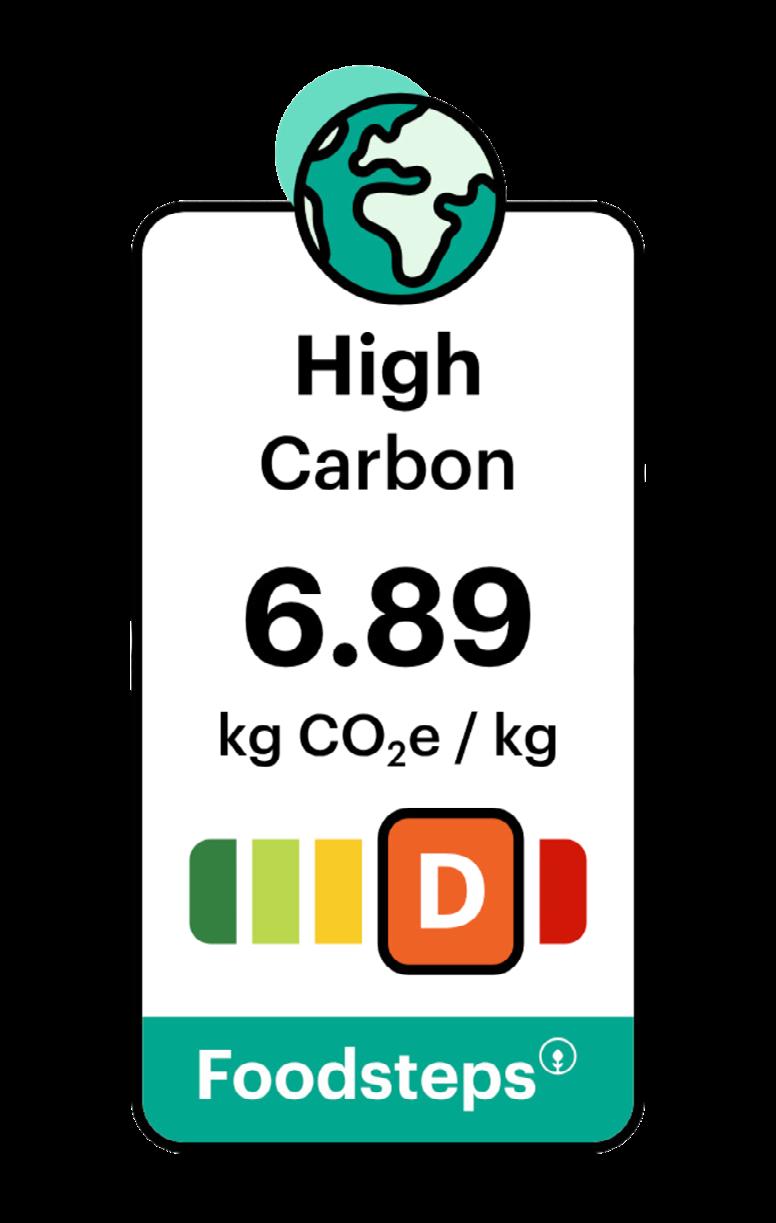
Primary School: 10 portions | Secondary School: 7 portions
Prep time: 15 mins
Cook time: 35 mins
Total time: 50 mins
Ingredients:
• 2 butternut squash
• 500g red onion
• 30ml olive oil
• 4g sea salt
• 30g honey
• 5g oregano
• 10g garlic
• 4g rosemary
• 10g red chillis
• 250g halloumi
• 2 x 400g tinned chickpeas
Method:
1. Peel and chop the garlic and rosemary. Dice the red chilli.
2. Peel and chop your butternut squash into even sized chunks, do the same with your red onions.
3. Mix everything together in a bowl apart from the halloumi, place on a tray and roast in the oven until golden and tender.
4. Pan fry the halloumi and add it to the tray bake straight from the oven, drizzling it with honey to serve.
This recipe was provided by Bidfood. They have over 1,000 recipes available on their website:
https://www.bidfood.co.uk/inspiration/recipes/


Image for illustrative purposes only.

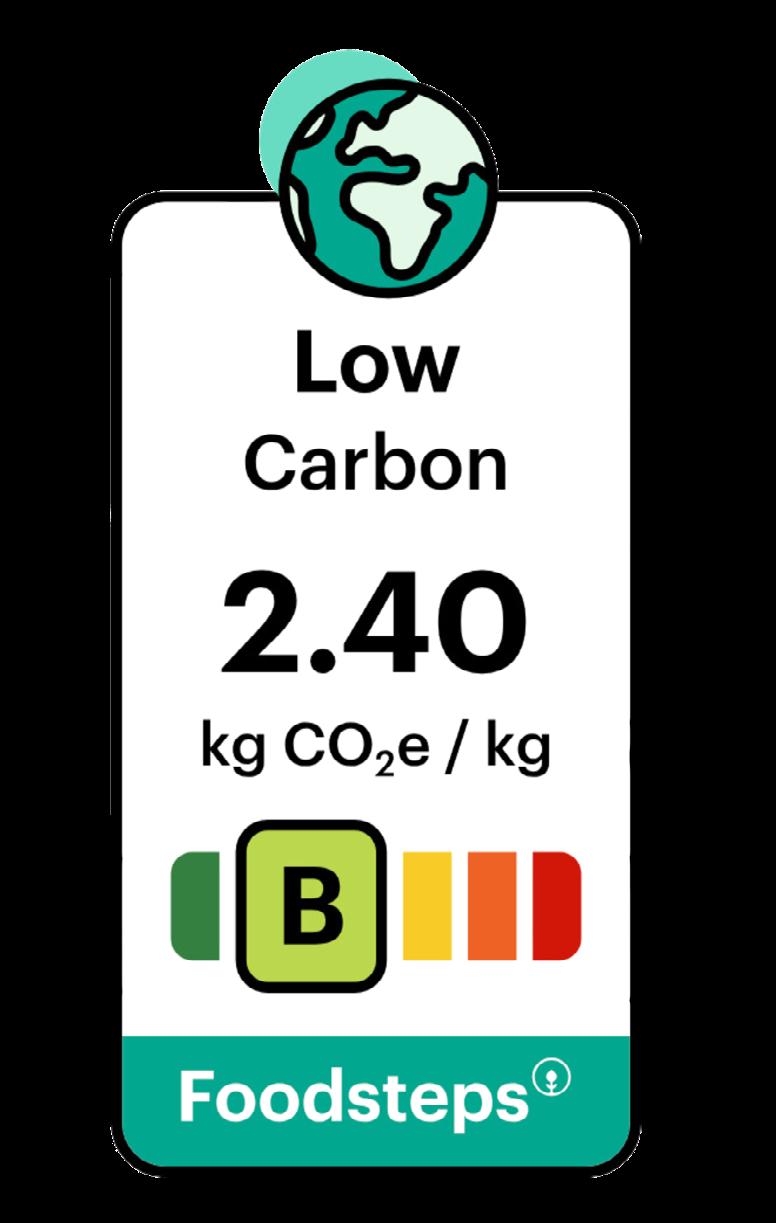
Primary School: 10 portions | Secondary School: 7 portions
Prep time: 10 mins
Cook time: 35 mins
Total time: 45 mins
Ingredients:
• 800g sweet potato
• 10/14 vegan sausages*
• 1 red pepper
• 2 courgettes
• 1 granny smith apple
• 1 red onion
• 1 garlic clove
• 3 tbsp honey
• 2 tbsp chopped rosemary
• 1 tbsp thyme
• 1 tsp black pepper
• 1 tsp olive oil
Method:
1. Preheat the oven to 170°c.
2. Peel and cube the sweet potato, red onion, red pepper and place them in an oven dish.
3. Coat the ingredients with oil, chopped herbs, black pepper and crushed garlic then place in the oven for 15 minutes.
4. Cube the courgette and set aside along with the peeled and cubed apple.
5. After the potato has been cooking for 15 minutes, remove from the oven and add the courgette, apple and honey. Return to the oven for a further 20 minutes.
6. Place the sausages in the oven in a seperate dish for 12-16 minutes.
7. Serve the sausages with the roasted potato dish and garnish.
You can make this recipe vegan-friendly by removing the honey.
*1 sausage per primary portion / 2 sausages per secondary portion

Image for illustrative purposes only.
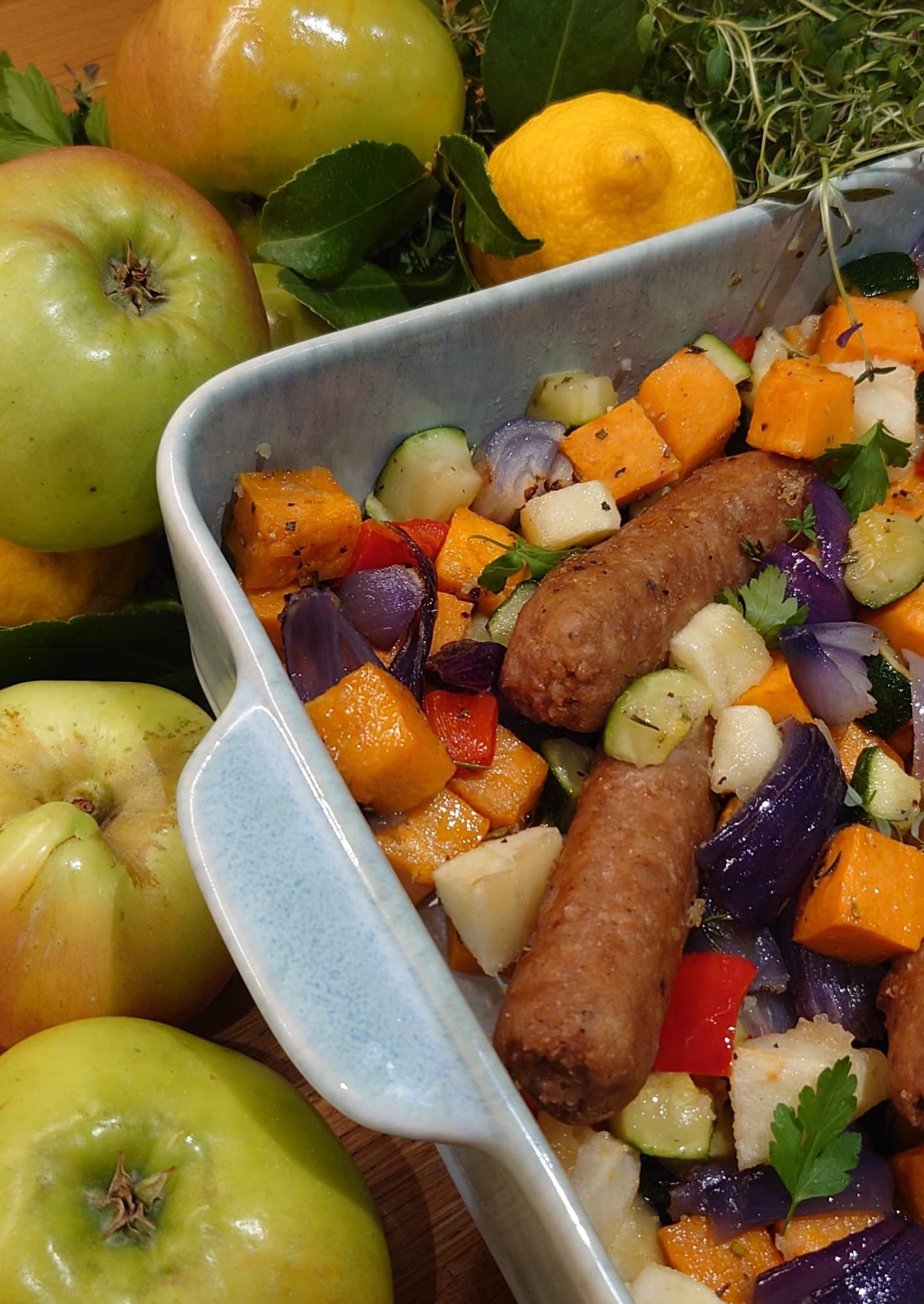
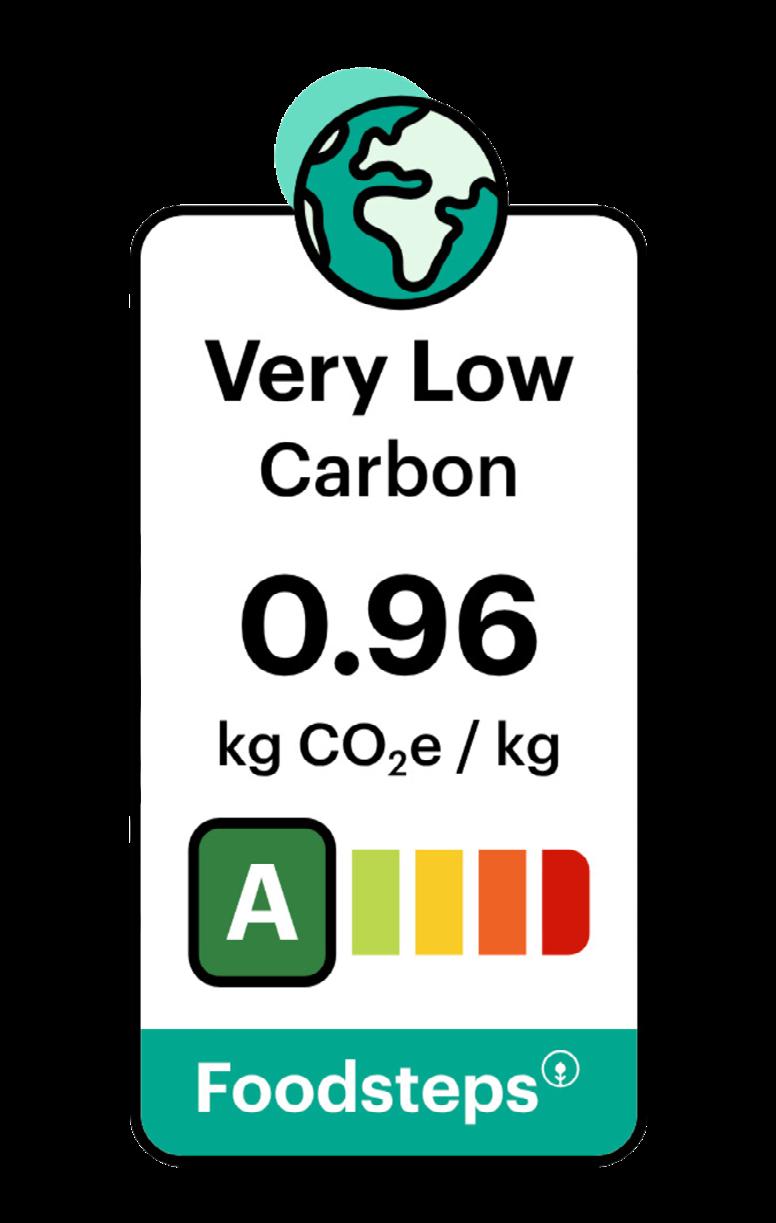
Primary School: 10 portions | Secondary School: 7 portions
Prep time: 15 mins
Cook time: 45 mins
Total time: 1 hour
Ingredients:
• 600g pasta
• 2 medium onion
• 6 carrots
• 2 leeks
• 1 swede
• 4 parsnips
• 4 courgettes
• ½ bulb garlic
• 2 cans of beans or chickpeas
• 2 cans of chopped tomatoes
• 4 tablespoons tomato purée
• 2 tablespoons vegetable oil
• 1 tablespoon sugar
• Some basil & oregano
• Salt & pepper
• 2 tablespoons stock powder
Method:
1. Chop the onions, carrots, leek, swede and parsnip into small slices. Crush the garlic.
2. Heat oil in a pan and add the chopped vegetables and crushed garlic, frying until slightly golden in colour.
3. Lower the heat and stir in the tomato purée, chopped tomatoes, courgettes, beans, stock powder, sugar and add 400ml water. Leave to simmer for 20 minutes. Add more water if needed.
4. Add a pinch of salt and pepper.
5. Add the pasta to the boiling salted water and cook for around 12 minutes.
6. Drain and add to the pot. Sprinkle with basil and enjoy!
Fibre boost: Try using wholewheat pasta or 50/50 to increase the fibre in this dish.
This recipe has been produced in collaboration with Forest Green Rovers - the world’s greenest football club.
Learn more about our partnership, here.


Image for illustrative purposes only.


Primary School: 8 portions |
Secondary School: 5 portions
Prep time: 10 mins
Cook time: 30 mins
Total time: 40 mins
Ingredients:
• 1 can butterbeans
• 1/2 bag spinach
• 1 medium onion
• 1/4 bulb of garlic
• 1 tbsp medium curry powder
• 1 can chopped tomatoes
• 1 tbsp tomato pureé
• 1 can coconut milk
• 1 bunch coriander
• 1 tbsp stock powder (oxo)
• 2 tbsp vegetable oil
• 400g long grain or brown rice
• Naan bread (optional)
Method:
1. Chop the onions and crush the garlic.
2. Heat the vegetable oil in a pan and fry the onion and garlic.
3. Add the curry powder to make a paste and then add the tomato pureé, chopped tomatoes, stock powder, butter beans (drained and rinsed) and coconut milk.
4. Simmer for 10 minutes, stirring regularly.
5. Cook rice in boiling salted water for around 20-25 minutes.
6. Add spinach to curry and wilt it into the sauce.
7. Serve over rice with your naan bread.
Butter beans are high in protein and fibre, as well as being an excellent source of carbohydrates.
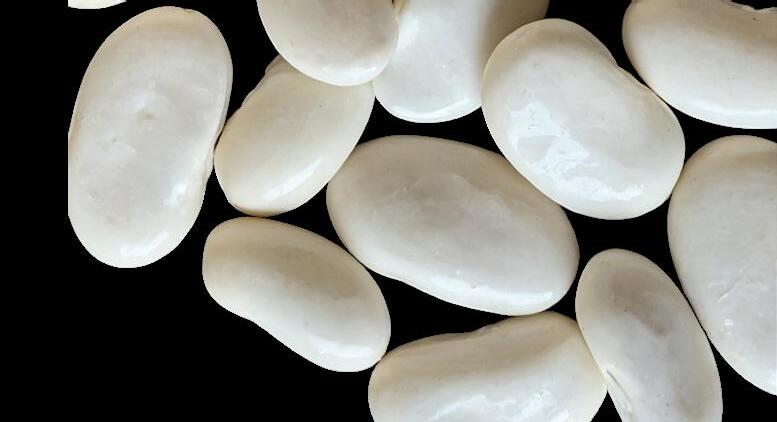

Image for illustrative purposes only.
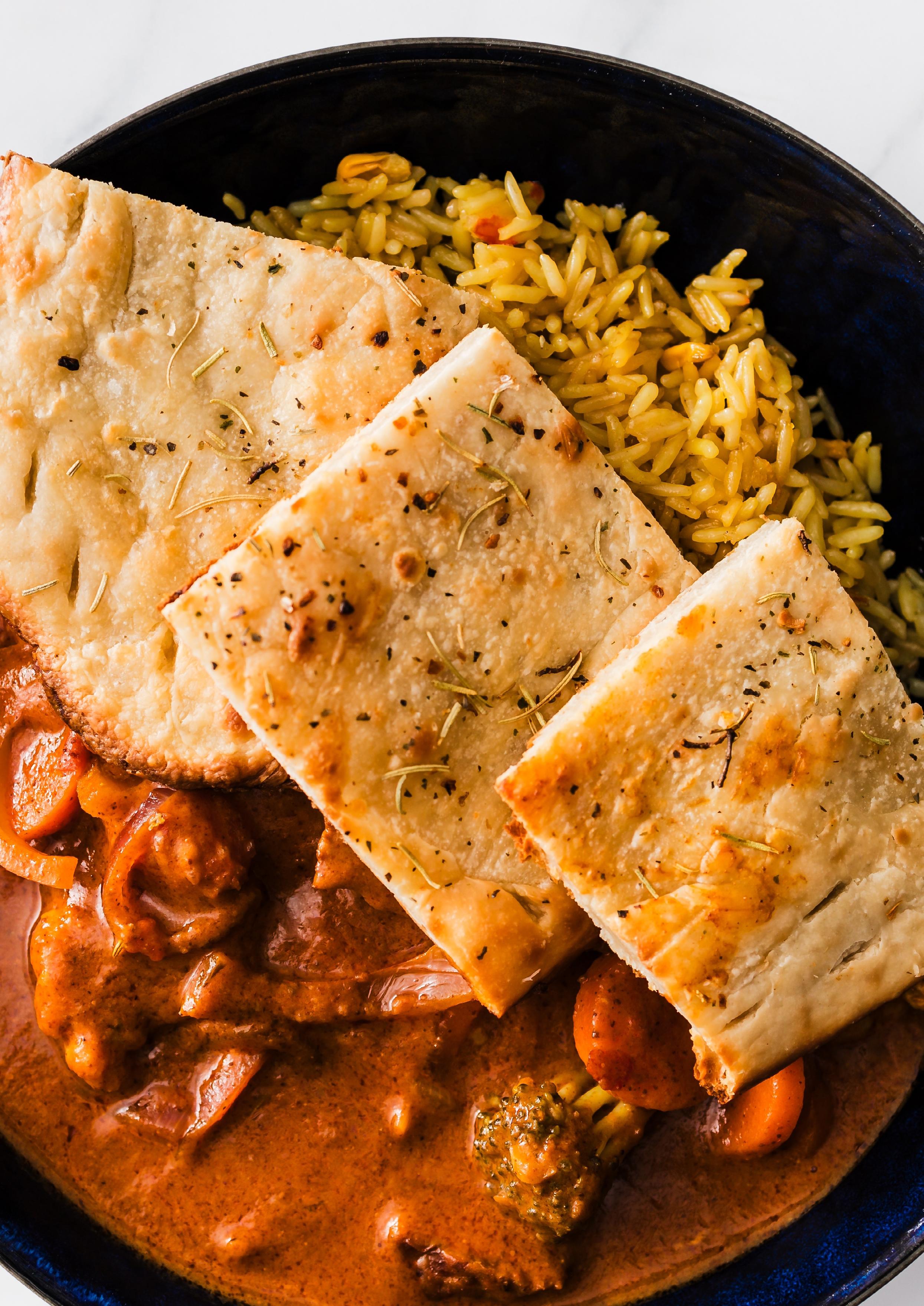
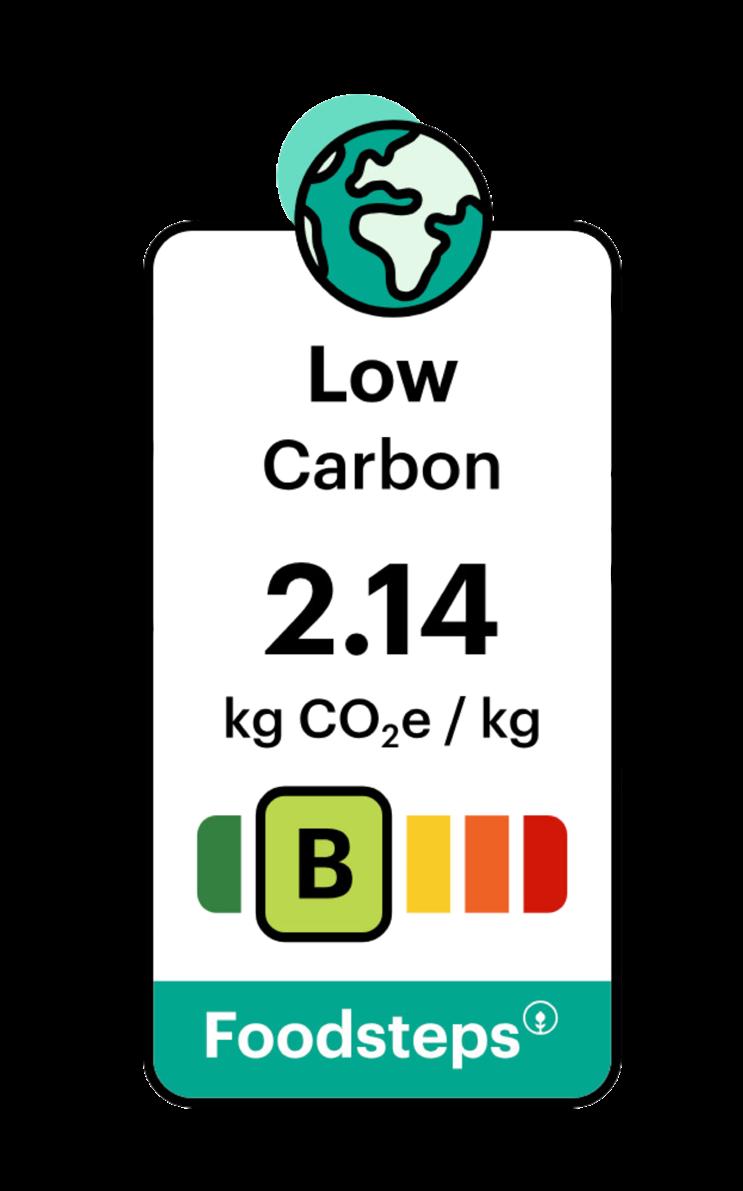
Primary School: 10 portions | Secondary School: 7 portions
Prep time: 15 mins
Cook time: 35 mins
Total time: 50 mins
Ingredients:
• 1 wrap per portion
• 200g vegan mince
• 1 medium onion
• 1/4 garlic bulb
• 1 tbsp tomato pureé
• 1 can chopped tomatoes
• 2 tbsp vegetable oil
• 1 tbsp stock powder
• 1 can kidney beans
• 1 tsp mild chilli powder
• 1 pepper
• 4 sweet potatoes
• Salad of your choice
• 150g long grain or brown rice
Method:
1. Cook the rice in boiling salted water and then rinse and leave to one side. Chop your onions, deseed and slice pepper and crush the garlic.
2. Heat oil in a pan, fry the garlic and add the vegan mince, sliced pepper and chilli powder.
3. Give it a good stir and blend in the tomato pureé, chopped tomatoes, stock powder and drained kidney beans. Simmer for a few minutes stirring well, then remove from heat.
4. Blend rice and chilli together to make a burrito filling.
5. Make a burrito and add to a well greased baking tray.
6. Cut the sweet potato into wedges and rub in some vegetable oil. Season with salt and pepper.
7. Place on a heavily greased baking tray and bake for around 40 minutes on 180-200°c.
8. 20 minutes into the cooking, add the burritos and continue the cooking process.
9. Remove from the oven and serve with salad.
This recipe has been produced in collaboration with Forest Green Rovers - the world’s greenest football club.
Learn more about our partnership, here


Image for illustrative purposes only.

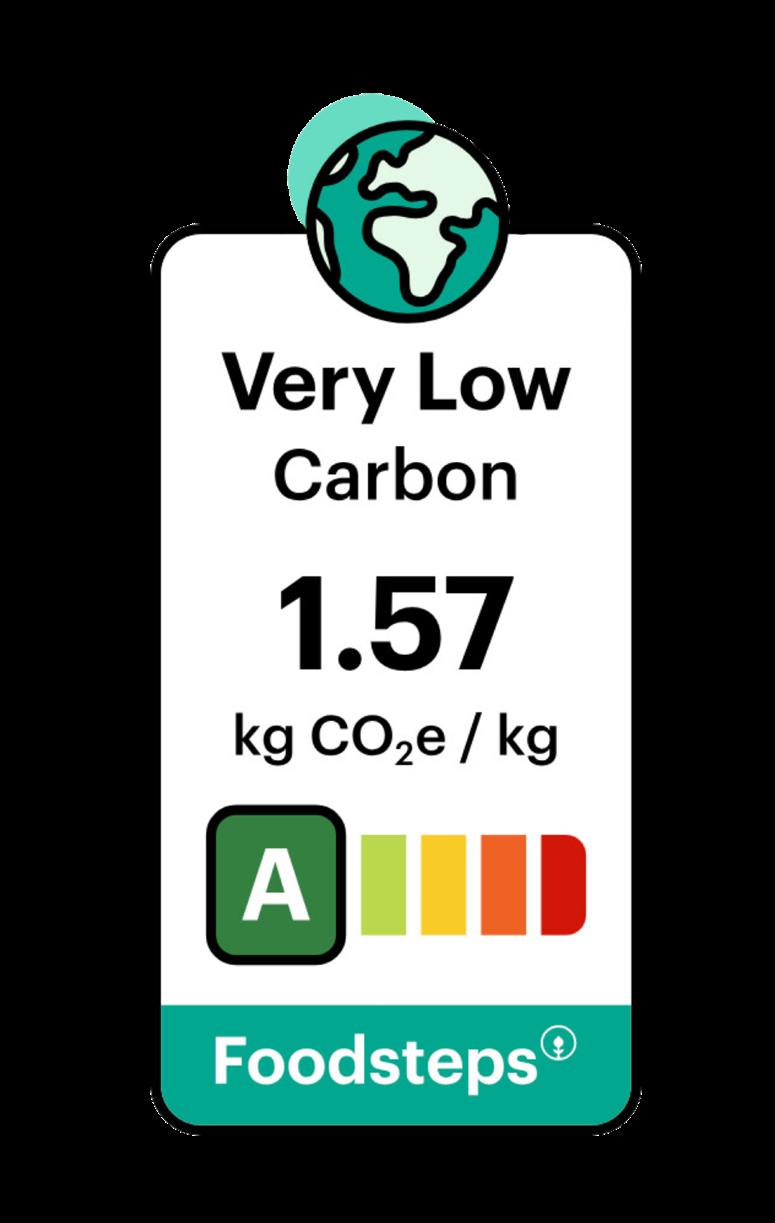
Primary School: 10 portions | Secondary School: 7 portions
Prep time: 10 mins
Cook time: 25 mins
Total time: 35 mins
Ingredients:
• 2 pce pizza dough
• 300g tomato base
• 50ml BBQ mari base
• 100g Triple Lion jackfruit
• Vegan grated mozzerella
This recipe was produced by Bidfood:
Method:
1. Preheat the oven to 220°c.
2. Roll the dough out to fit the tin, then prick the base with a fork and leave in a warm place to proof for 10 minutes.
3. In a bowl, mix the BBQ base and tomato sauce, then spread the sauce over the base.
4. Chop the jackfruit and top the pizza, then sprinkle over the cheese.
5. Bake in the oven for 20-25 minutes until golden brown and the base crisps.

Jackfruit is a good source of vitamin C, potassium, dietary fibre, and other important vitamins and minerals.



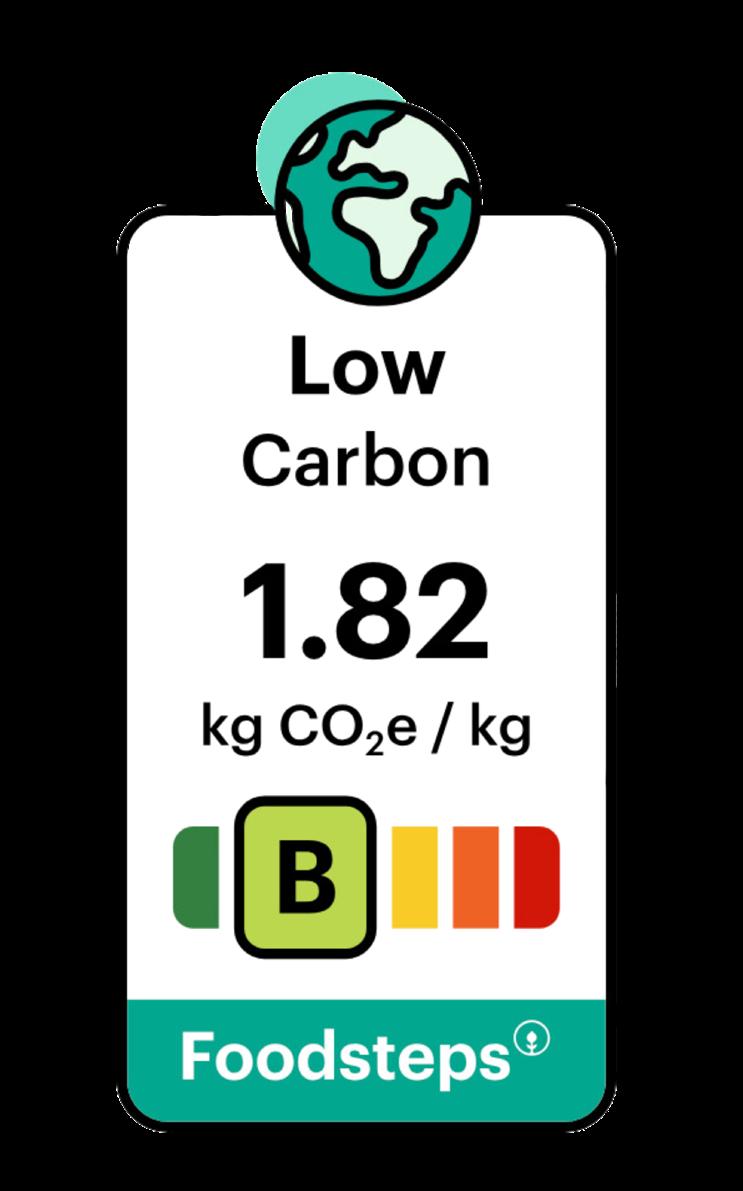
Primary School: 10 portions | Secondary School: 7 portions
Prep time: 10 mins
Cook time: 10 mins
Total time: 20 mins
Ingredients:
• 500g tofu
• 80g corn flour
• 150ml oriental mari base
• 50ml vegetable oil
• 10g garlic pureé
• 10g ginger pureé
• 400g oriental vegetables
• 10g vegetable bouillon paste
• 450g chop suey noodles
Method:
1. Remove the tofu from packaging and then press the tofu between two trays for 15 minutes to drain.
2. Dice the tofu and coat in 70g of cornflour. Add half the oil to a pan and heat gently, frying the tofu until golden in colour.
3. Place the tofu in a bowl and mix with 50ml of the mari base.
4. Add the remaining oil to the pan to heat, then fry the stir fry mix until hot.
5. Add the remaining mari base and vegetable stock to the vegetables and cook for a few minutes. Then with the remaining cornflour, thicken the vegetables and sauce mix.
6. Add the noodles to the pan and mix well. Fold through tofu before serving.
This recipe was provided by Bidfood. They have over 1,000 recipes available on their website:
https://www.bidfood.co.uk/inspiration/recipes/


Image for illustrative purposes only.


Primary School: 10 portions | Secondary School: 7 portions
Prep time: 10 mins
Cook time: 1 hour
Total time: 1 hour 10 mins
Ingredients:
• 20ml vegetable oil
• 500g vegan mince
• 100g onion
• 100g carrot
• 10g garlic pureé
• 5g rosemary
• 600ml water
• 60g GF gravy granules
• 100g peas
• 100g sweetcorn
• 1.2kg sweet potato
• 100ml full fat milk

Method:
1. Place a pan on the stove, add the oil and then fry the mince.
2. Prep potatoes then cover with water and boil until tender.
3. Drain the potatoes, add the milk, then mash until smooth.
4. Once the mince is browned all over, add the onions, carrots, garlic and rosemary, and fry for a few more minutes.
5. Add the water and bring to a boil. Allow to simmer until tender, then thicken with the granules.
6. Fold through the peas and sweetcorn. Then place in an oven proof dish.
7. Top with the mashed potato and bake in the oven for approx 1 hour until potato is golden.
By using plant-based mince instead of beef mince, you are reducing your carbon emissions per kg by 90%!
This recipe was provided by Bidfood. They have over 1,000 recipes available on their website:
https://www.bidfood.co.uk/inspiration/recipes/


Image for illustrative purposes only.
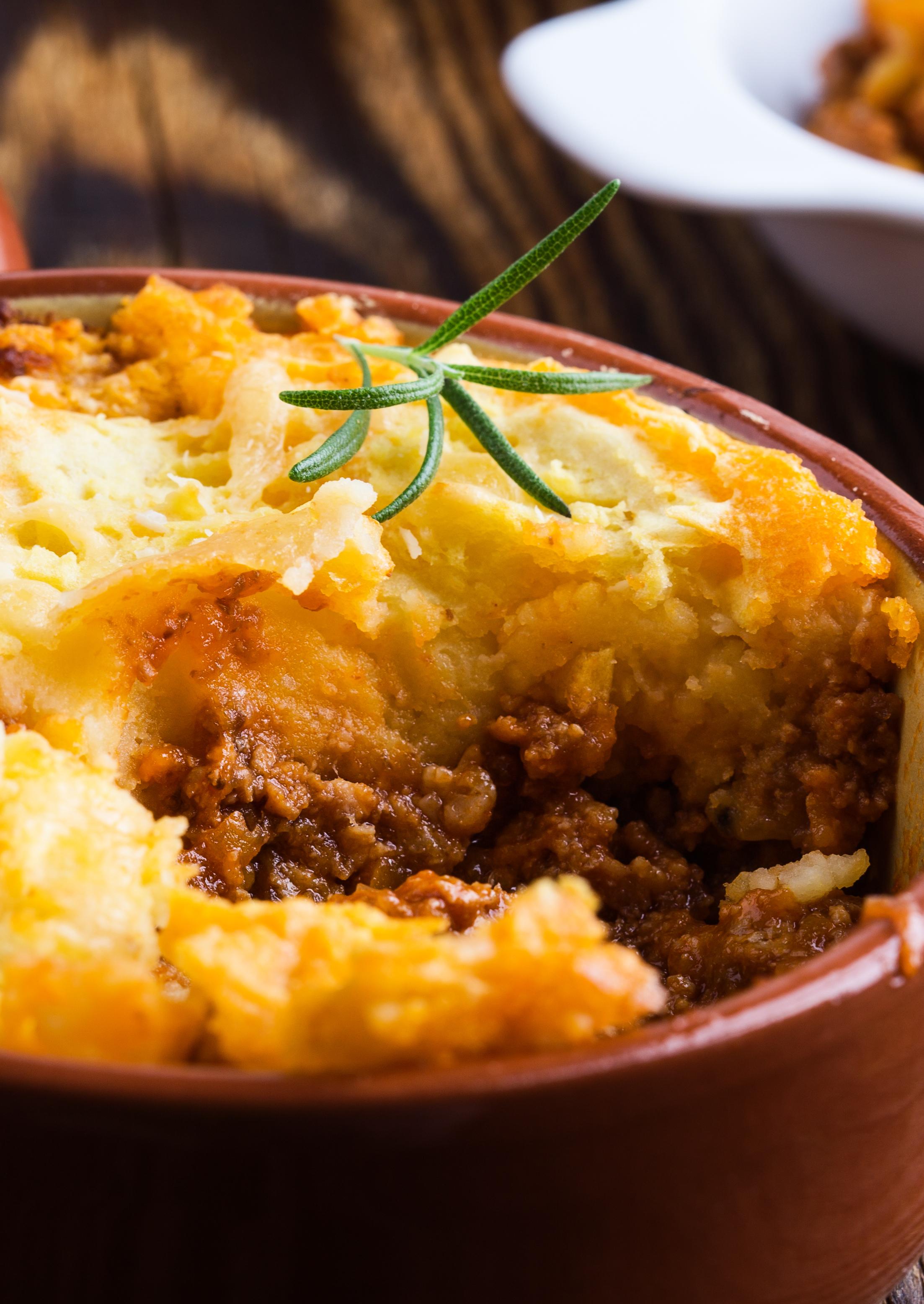
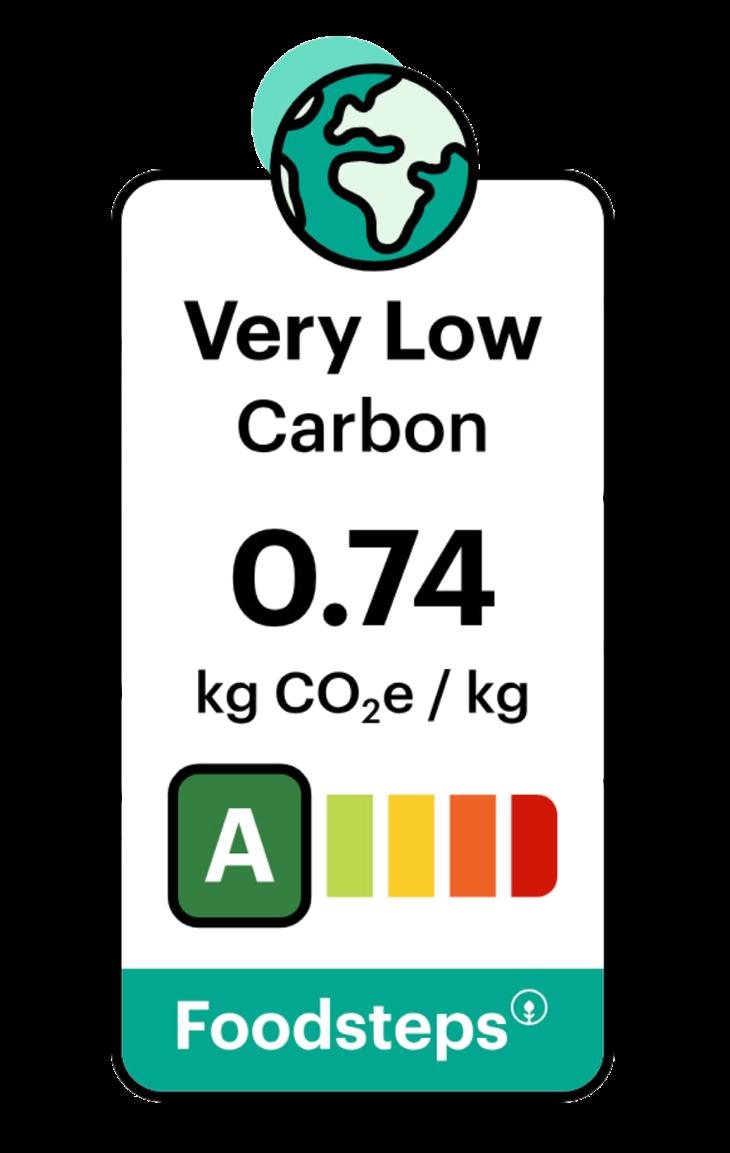
Primary School: 10 portions | Secondary School: 7 portions
Prep time: 10 mins
Cook time: 40 mins
Total time: 50 mins
Ingredients:
• 20ml vegetable oil
• 100g onions
• 100g carrots
• 20g garlic pureé
• 5g oregano
• 5g basil
• 800g chopped tomatoes
• 40g tomato pureé
• 20g vegetable bouillon
• 200g red lentils
• 450g wholewheat fusili

Method:
1. Place the oil in a pan and gently heat on the stove.
2. Then add the onions and carrots and cook until tender. Next, add the garlic and herbs and fry for a few minutes.
3. Add the chopped tomatoes, tomato pureé, and vegetable stock and allow to simmer for 30 minutes until the sauce reaches the correct consistancy.
4. Cook the lentils until tender, then refresh.
5. Once the sauce is ready, fold through the lentils.
6. Cook the pasta as per instructions, then drain and fold through the sauce before serving.
As part of the school food standards, wholegrain carbohydrates should be served at least once a week.
Using wholemeal pasta further increases the fibre in the dish.
Fibre is important for a healthy digestive system.

This recipe was produced by Bidfood

Image for illustrative purposes only.
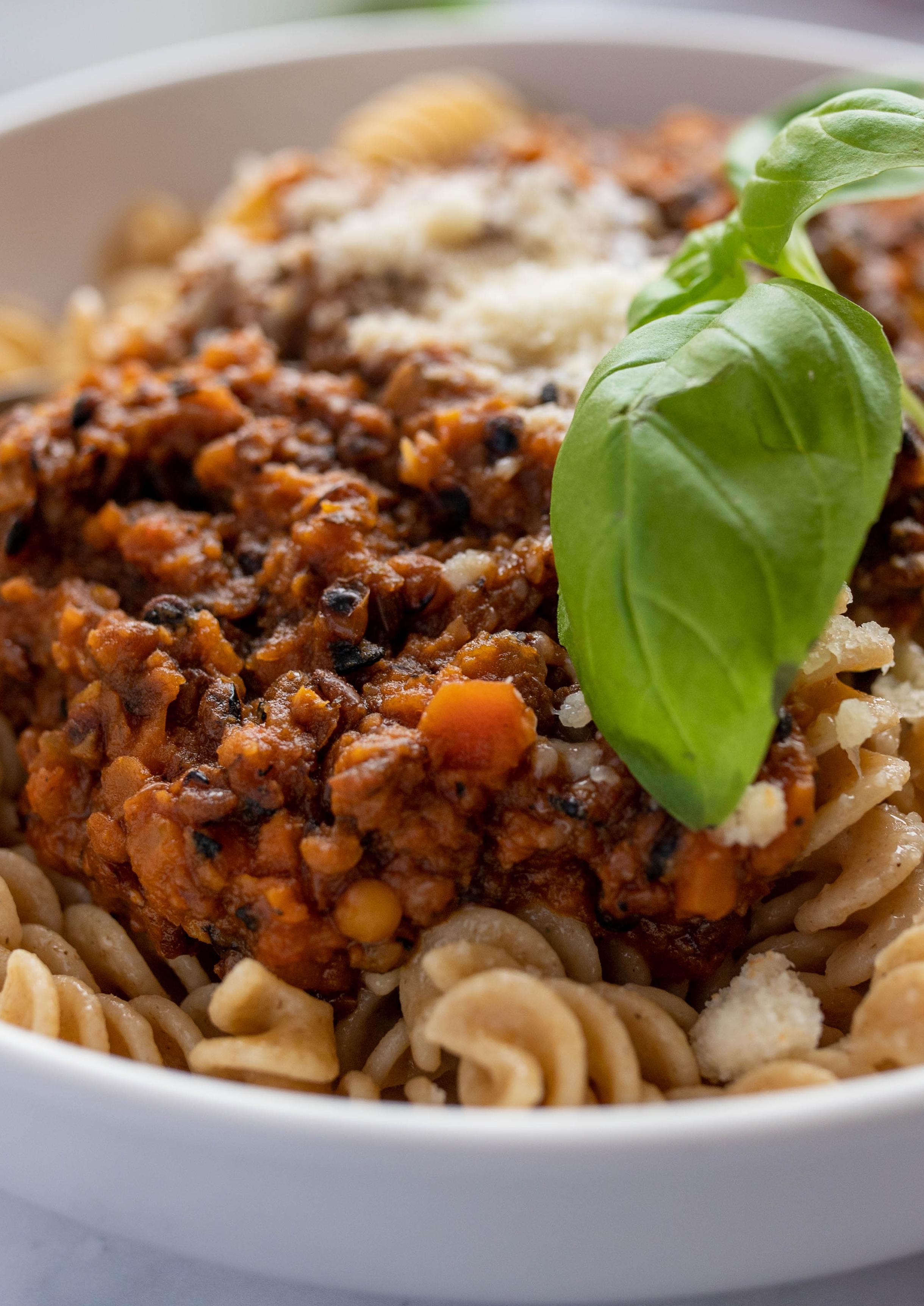

Primary School: 10 portions | Secondary School: 7 portions
Prep time: 10 mins
Cook time: 50 mins
Total time: 1 hour
Ingredients:
• 60ml extra virgin olive oil
• 100g white onion
• 10 celery sticks
• 200g carrots
• 20g garlic
• 10/14 vegan sausages*
• 15g paprika
• 15g fennel seeds
• 15g thyme
• 15g bay leaves
• 15g veg stock mix
• 400g chopped tomatoes
• 500g butter beans
• 5g salt
• 125ml water
Method:
1. Heat the oil in a large saucepan. Add the onion, celery and bay leaf, and cook gently for around 7 minutes until translucent.
2. Add garlic, paprika and fennel seeds, and continue cooking for 1-2 minutes before adding carrots and cooking for a further 5 minutes. Stir regularly to ensure spices don’t burn.
3. Use a wooden spoon to remove any residue stuck to the pan. Cook for a couple of minutes before adding the tinned tomatoes, salt and thyme. Bring to a simmer.
4. In a seperate frying pan, heat a splash of oil and fry the sausages over a high heat so that they colour on two sides. You may need to do this in batches.
5. Add sausages to the casserole and cook for 20 minutes, stirring ocassionally. Add a little water if it becomes too dry. Stir in the beans and cook for a further 5 minutes before tucking in to this hearty meal. Serve with rice or bread.
This recipe was provided by allmanhall's charity partner, Jamie's Farm. They transform lives through a unique residential programme built around the core elements of Farming, Family, Therapy and Legacy.

*1 sausage per primary portion / 2 sausages per secondary portion


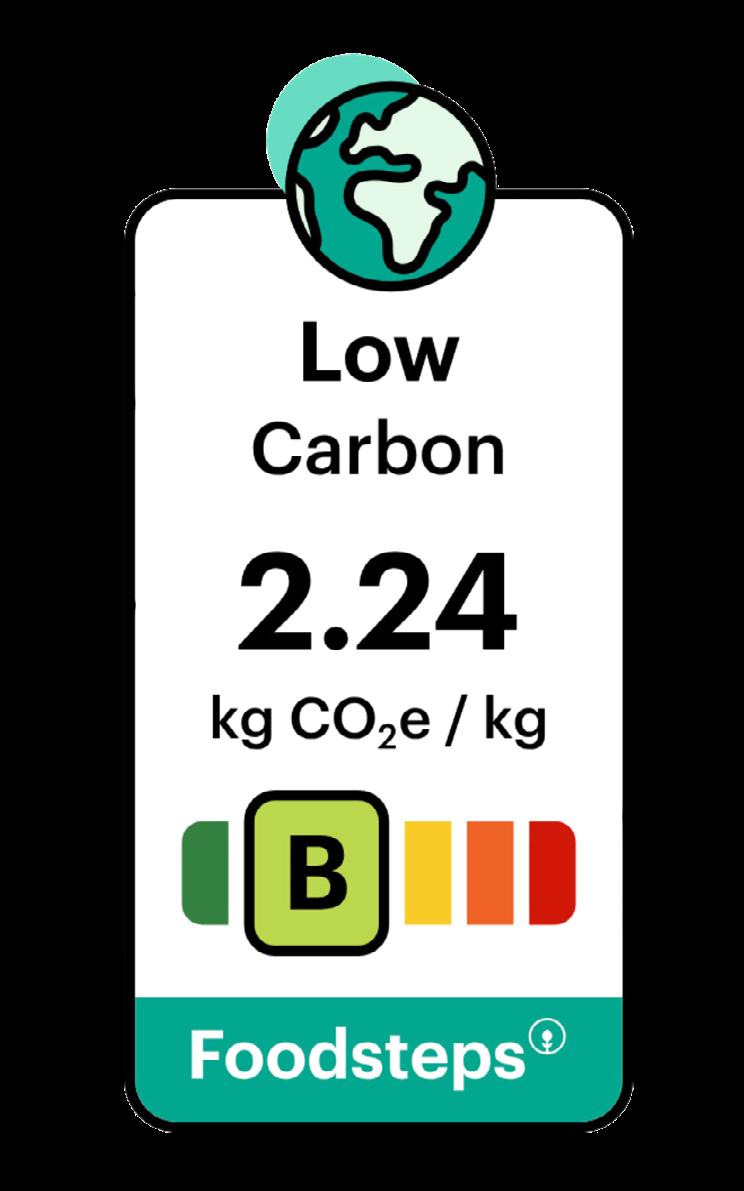
Primary School: 10 portions | Secondary School: 7 portions
Prep time: 10 mins
Cook time: 20 mins
Total time: 30 mins
Ingredients:
• 600g canned 5 bean salad
• 1 medium onion
• 1 tbsp of vegetable oil
• Half a garlic bulb
• 1 tsp mild chilli powder
• 1 tbsp stock powder
• 1 can chopped tomatoes
• Small amount of coriander
• 2 bell peppers
• 1 courgette
• 300g brown rice
• Chopped coriander
Method:
1. Peel and chop onions, crush garlic, deseed & slice peppers and slice courgettes.
2. Heat oil in a pan and gently fry onions and garlic till golden, then add in the peppers.
3. Lower the heat and and blend in the chilli powder. Then stir in the chopped tomatoes, drained beans and stock powder. Add a little water if needed to gain correct consistency.
4. Leave to simmer over a low heat, making sure to stir regularly.
5. Cook the rice by letting it simmer for 10-15 minutes, drain then serve.
6. Spoon over the 5-bean chilli and serve with rice. Garnish with chopped coriander.
This recipe has been produced in collaboration with Forest Green
Learn more about our partnership, here


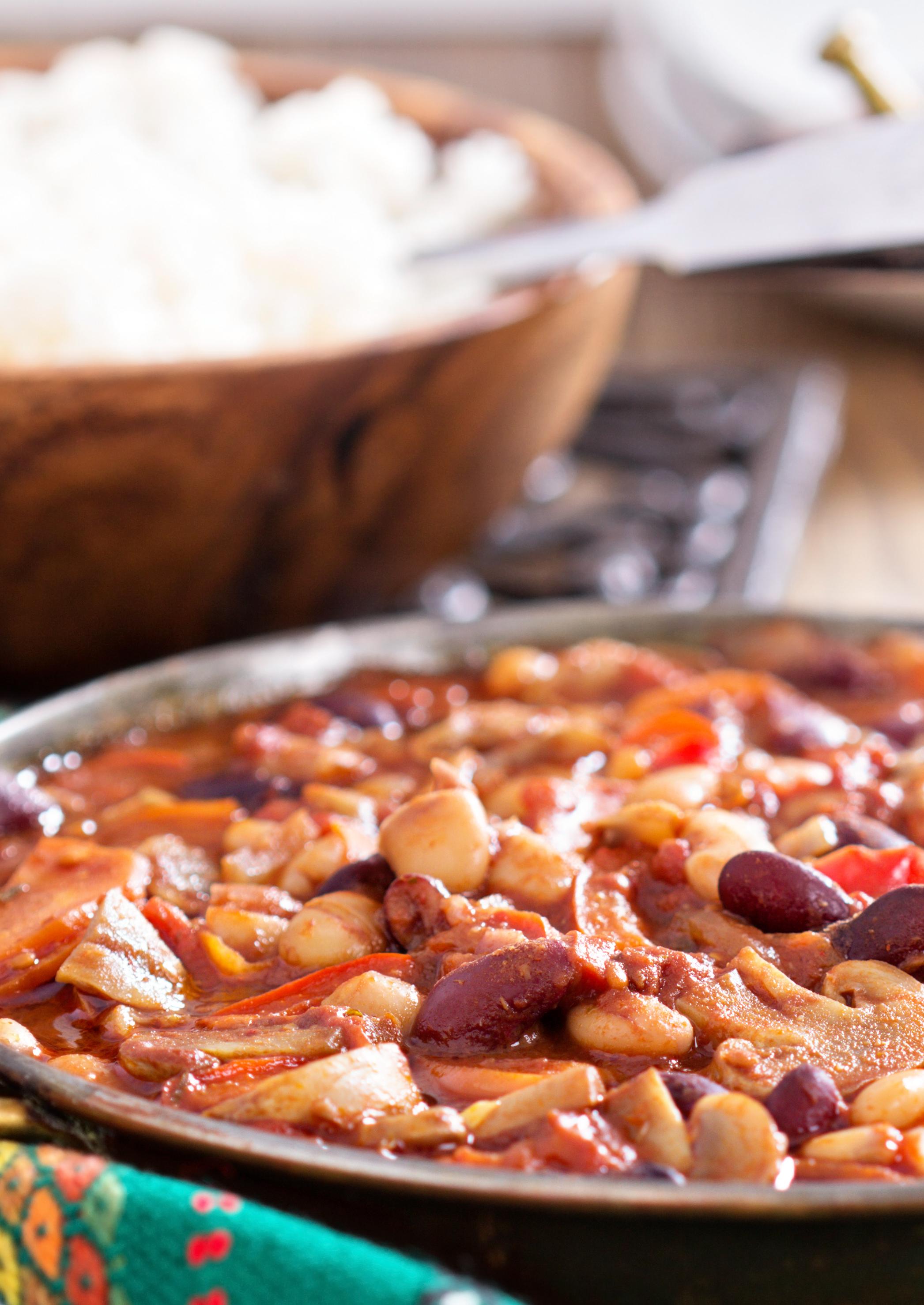
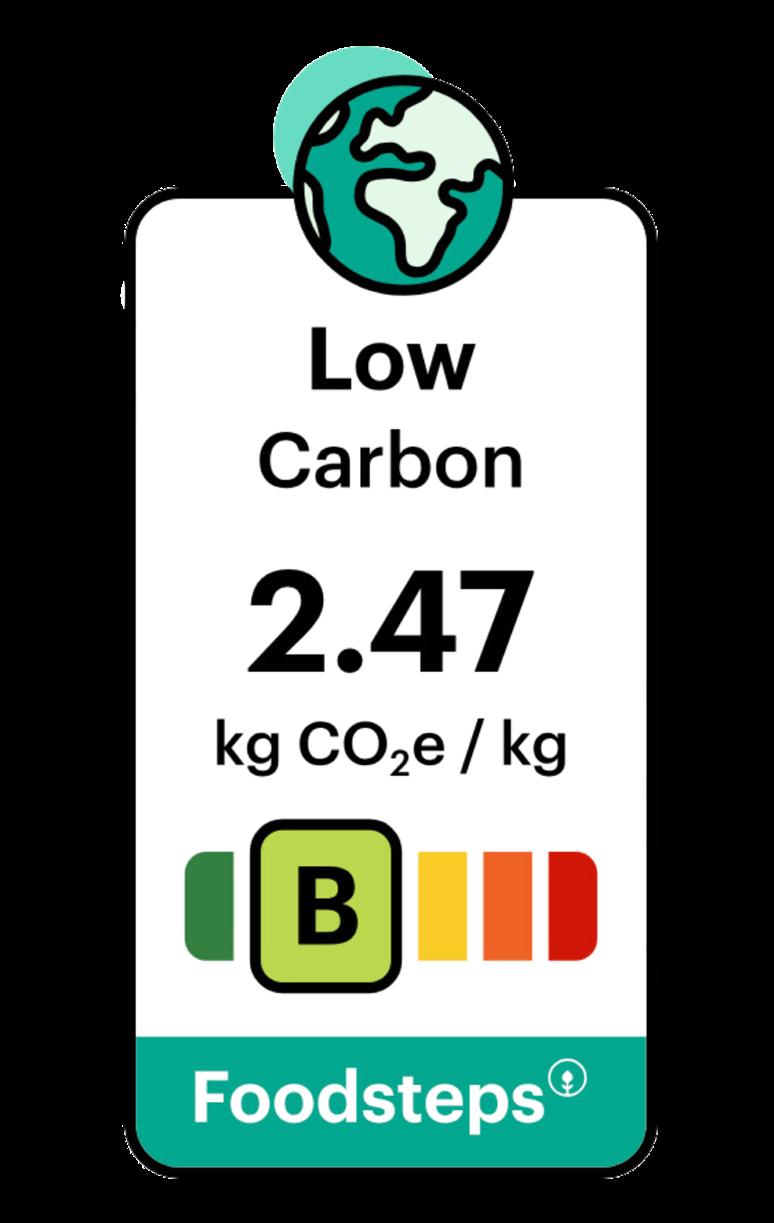
Primary School: 10 portions | Secondary School: 7 portions
Prep time: 10 mins
Cook time: 1 hour 20 mins
Total time: 1 hour 30 mins
Ingredients:
• 100g spinach
• 1/2 of a butternut squash
• 30ml olive oil
• 100g white onion
• 20g garlic pureé
• 5g smoked paprika
• 30g cranberry sauce
• 5 medium eggs
• 150g vegan feta cheese
• 300g filo pastry sheets
Method:
1. Preheat oven to 180°c.
2. Cut the butternut squash in half, remove the seeds and drizzle half the olive oil over it. Then place it into the oven until soft. Then remove and let it cool down.
3. Peel and dice the onions, place them into a saucepan with the rest of the olive oil, cook until golden brown.
4. Add the garlic and spinach 1 minute before removing from the heat. Then add the smoked paprika and cranberry sauce, mix well.
5. Add the cooked squash to the onions, mix well, then one by one add 4 of the eggs.
6. Cut the pastry into 10 squares, add the squash mixture to the middle. Sprinkle the feta in then press down on each side with a fork.
7. Brush the final egg over the pastry and place into the oven until golden brown and above 75°c in the centre of the pastry.
This recipe was provided by Bidfood. They have over 1,000 recipes available on their website:
https://www.bidfood.co.uk/inspiration/recipes/


Image for illustrative purposes only. Don’t use sesame or any nuts in your recipes at school.
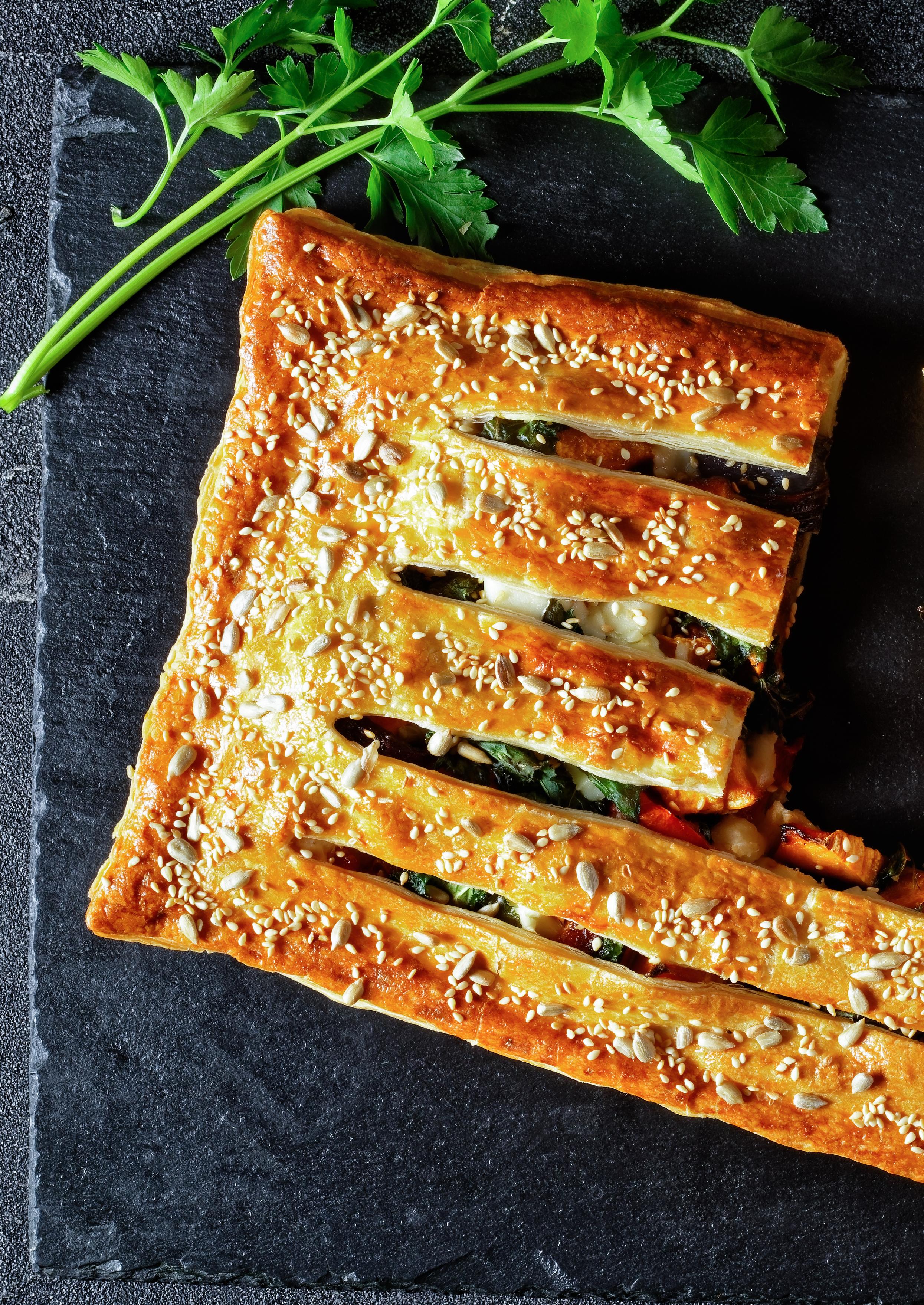
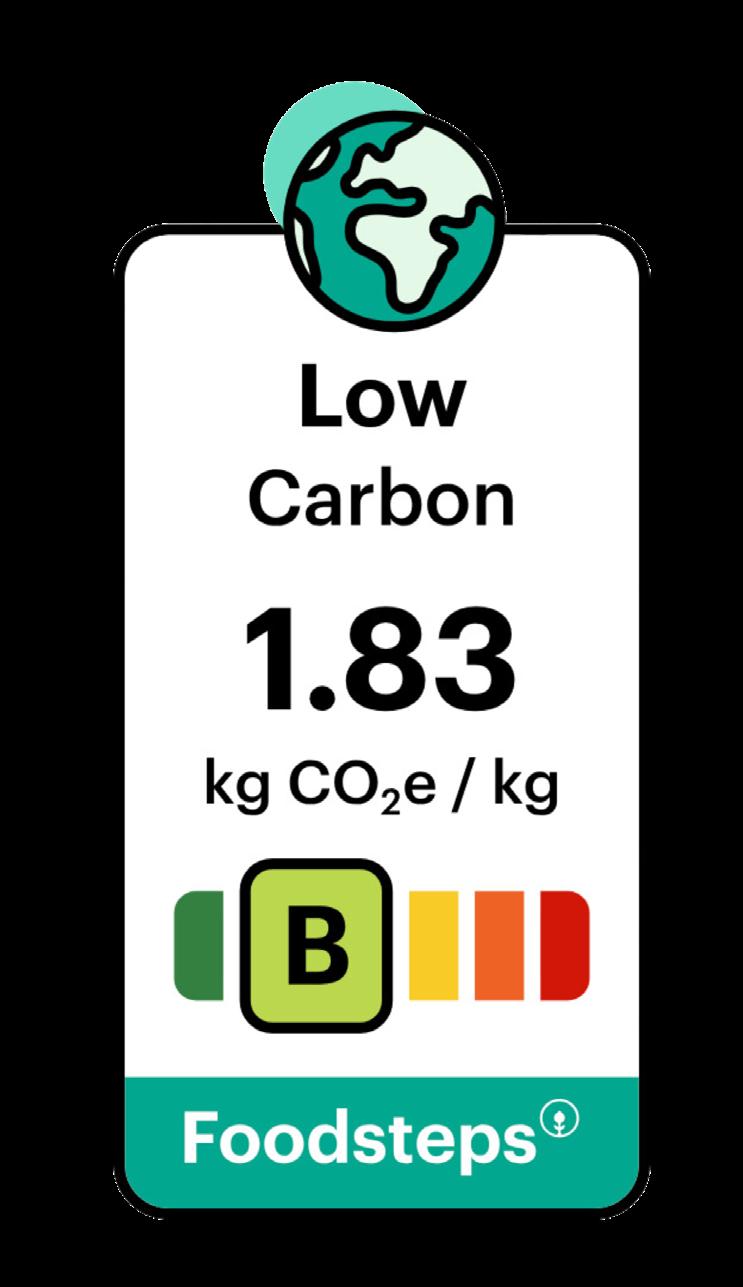
Primary School: 10 portions | Secondary School: 7 portions
Prep time: 5 mins
Cook time: 45 mins
Ingredients:
• 2g basil
• 25ml vegetable oil
• 800g tomato base
• 200g red lentils
• 100g aubergine
• 10g garlic
• 2 red peppers
• 100g spinach
• 100g onion
Method:
1. Pre wash the lentils and drain them well.
Total time: 50 mins This recipe was provided by Bidfood. They have over 1,000 recipes available on their website:
2. In a saucepan, heat the oil. Once the oil is hot, add the onions and cook until tender, then add the diced peppers and aubergines.
3. Once they are tender, fold in the lentils and garlic.
4. When this is all stirred in, add the tomato sauce and 200ml water and allow to cook for 30 minutes or until the lentils are soft.
5. Fold the basil and spinach in just before you are about to serve.
https://www.bidfood.co.uk/inspiration/recipes/


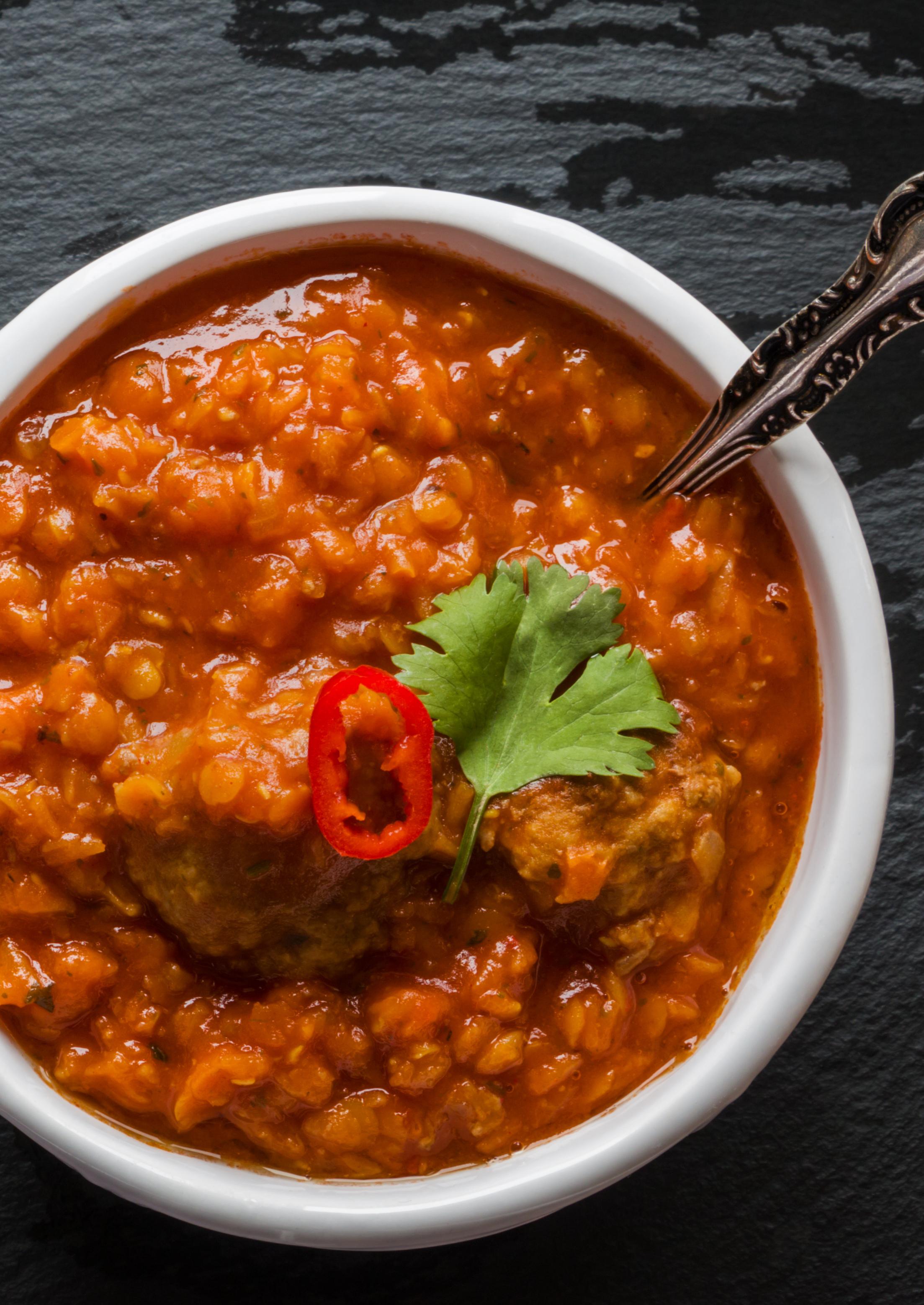

Primary School: 10 portions | Secondary School: 7 portions
Prep time: 20 minutes
Cook time: 1 hour 30 mins
Total time: 1 hour 50 mins
Ingredients:
• 1.5kg red cabbage
• 4 peeled & chopped apples
• 2 sliced onions
• Zest & juice of 1 orange
• 1 tbsp ground mixed spice
• 100g light soft brown sugar
• 3 tbsp cider vinegar
• 300ml dry cider or apple juice (depending on the age of the school pupils!)
• 25g plant-based butter
Method:
1. Peel off the outer leaves from the cabbage and discard.
2. Quarter the cabbage, removing the tough stem, then thinly slice.
3. Arrange a layer of the cabbage on the bottom of a large saucepan, followed by some of the onions, apples, orange zest and juice, mixed spice, sugar and seasoning.
4. Continue to create layers until you have used up the ingredients.
5. Pour over the vinegar and cider or juice. Dot the butter on top.
6. Bring to the boil then simmer with a lid on over low heat for 1 hour and 30 minutes, until tender and the liquid has mostly evaporated down.
”A colourful and comforting dish packed full of sweet aromatic spices and festive flavours. Incredibly easy to make and slowly cooked with just a few simple ingredients. Should there be any leftovers, you can reheat up to 2 days with a splash of water, or serve cold alongside your cheese board or cold cuts platter.”
Ivor Richards Client Relationship Manager at allmanhall


Image for illustrative purposes only.
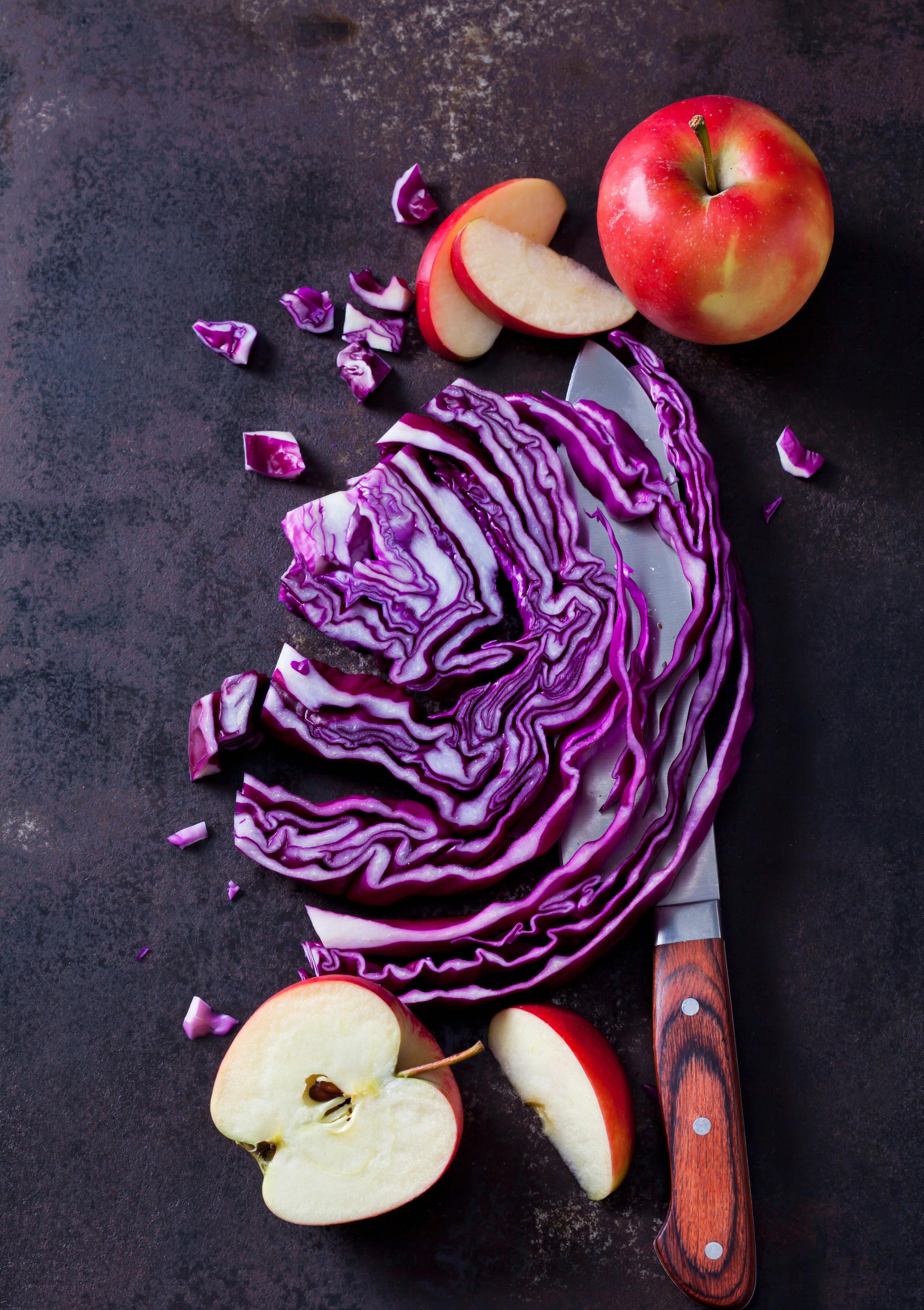

Primary School: 10 portions | Secondary School: 7 portions
Prep time: 10 mins
Cook time: 30 mins
Total time: 40 mins
Ingredients:
• 240g bananas
• 3g baking powder
• 100g plain flour
• 30g porridge oats
• 15ml soya milk
• 3g cinnamon sticks
• 40ml olive oil
• 15g pure maple syrup
• 30g soft brown sugar
Method:
1. Preheat the oven to 160°c and grease a baking tin.
2. Mash the banana with the oil, sugar, syrup and milk in a bowl.
3. In another bowl, mix all the other ingredients together and then fold them into the wet mix.
4. Place the mixture into a tin and bake for 50 minutes until cooked in the middle.
5. Allow to cool before serving.
This recipe was provided by Bidfood. They have over 1,000 recipes available on their website:
https://www.bidfood.co.uk/inspiration/recipes/



Image for illustrative purposes only.
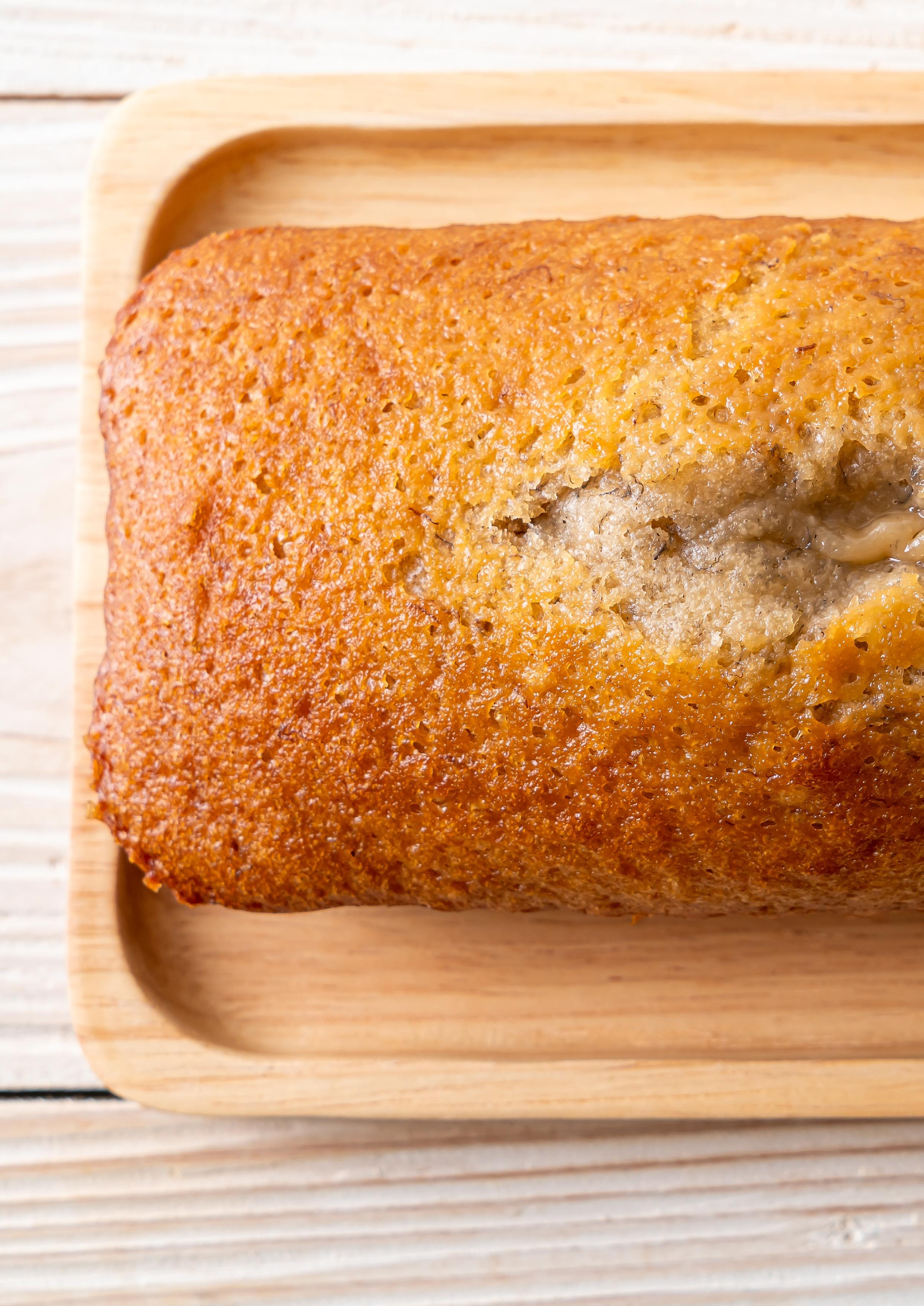
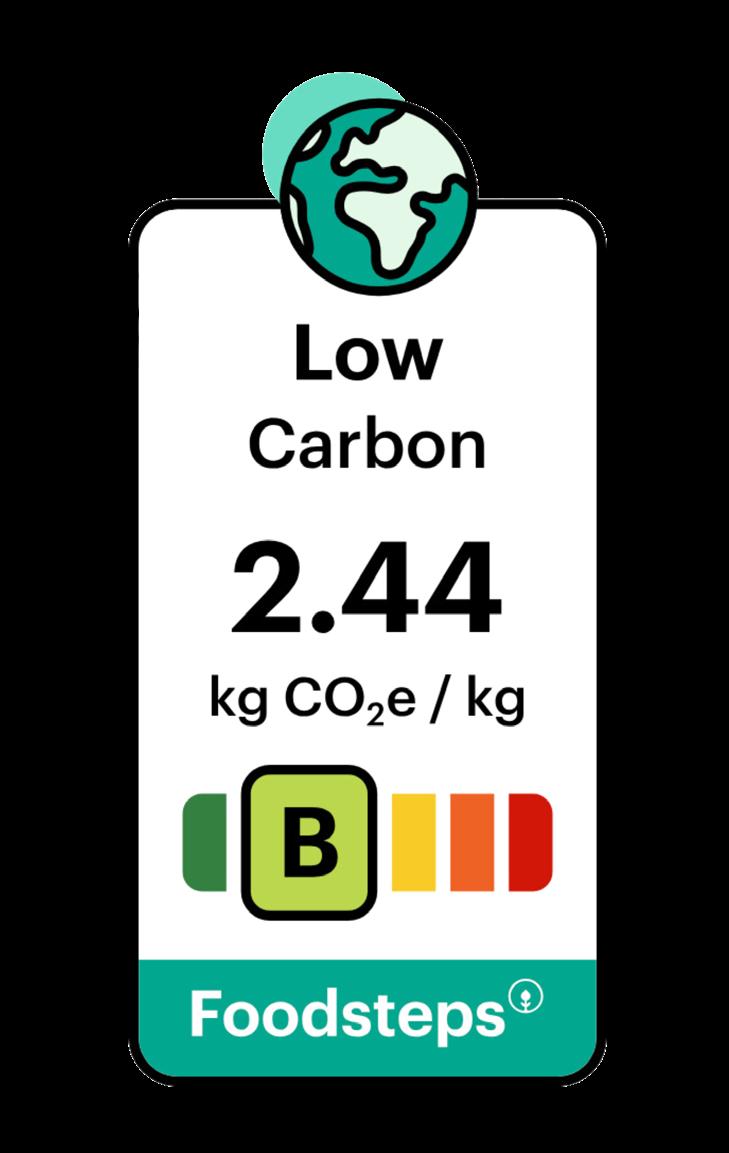
Primary School: 10 portions | Secondary School: 7 portions
Prep time: 15 mins
Cook time: 20 mins
Total time: 1 hour 10 mins
Ingredients:
• 180g plain flour
• 180g caster sugar
• 50g cocoa Powder (Do opt in for Fairtrade where possible)
• 90g margerine
• 880ml full fat milk
• 70g custard mix
Method:
1. Preheat the oven to 180°c, then grease and line a square tin with grease proof paper. Mix together the flour, sugar and cocoa in a bowl.
2. Melt the soft spread and then mix with the other ingredients until it becomes crumbly.
3. Pour the mixture into the tin then press down ensuring it fills the corners.
4. Bake in the oven for 20 minutes and allow to cool before serving.
Custard:
1. Place the sugar in a thick bottomed pan and then pour the milk on top.
2. Place on the stove and heat gently until the milk boils, then stir in the custard powder and continue to stir until it thickens.
3. Allow it to simmer for a few minutes to allow the powder to cook out before serving.
This recipe was provided by Bidfood. They have over 1,000 recipes available on their website:
https://www.bidfood.co.uk/inspiration/recipes/


Image for illustrative purposes only.
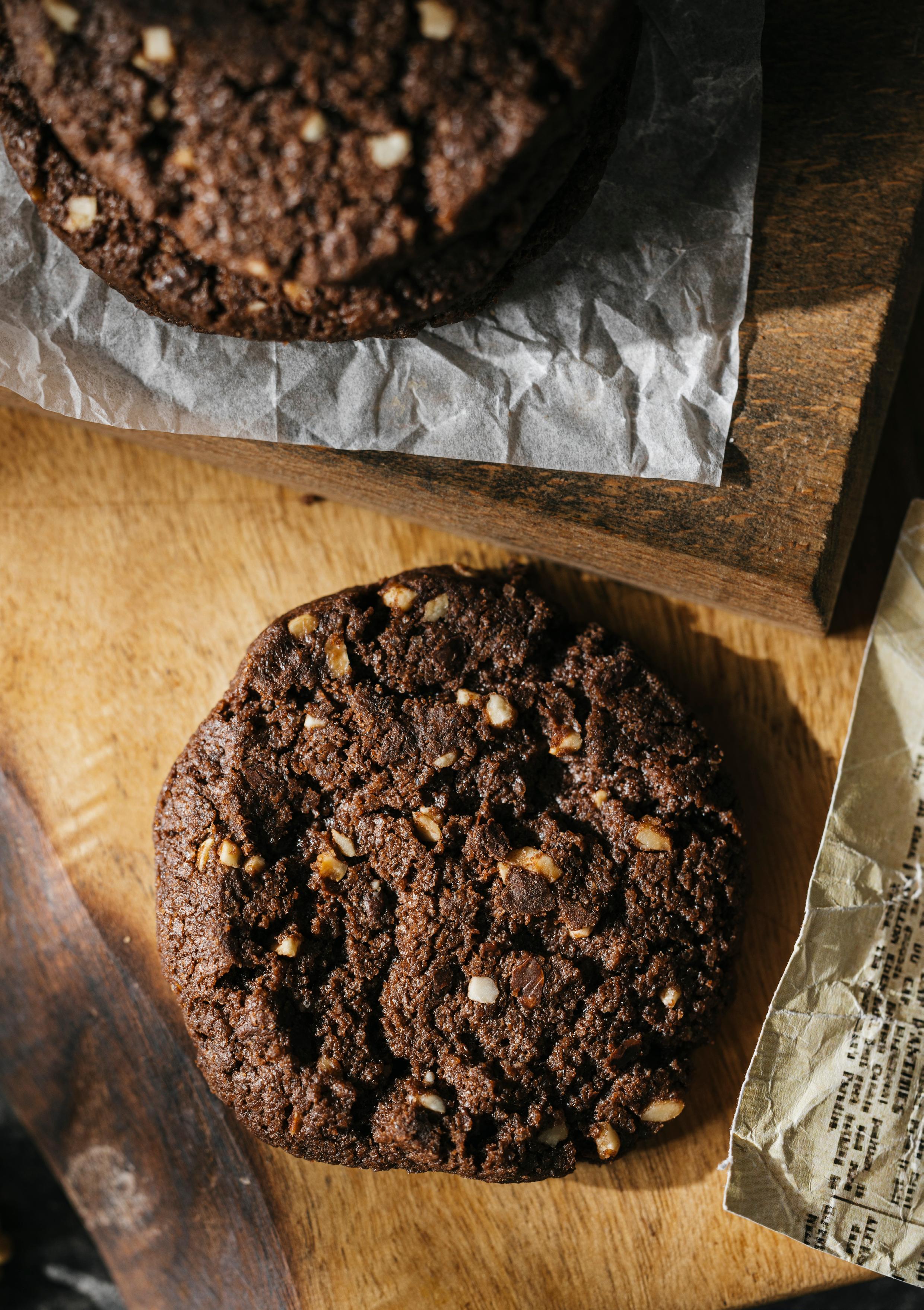
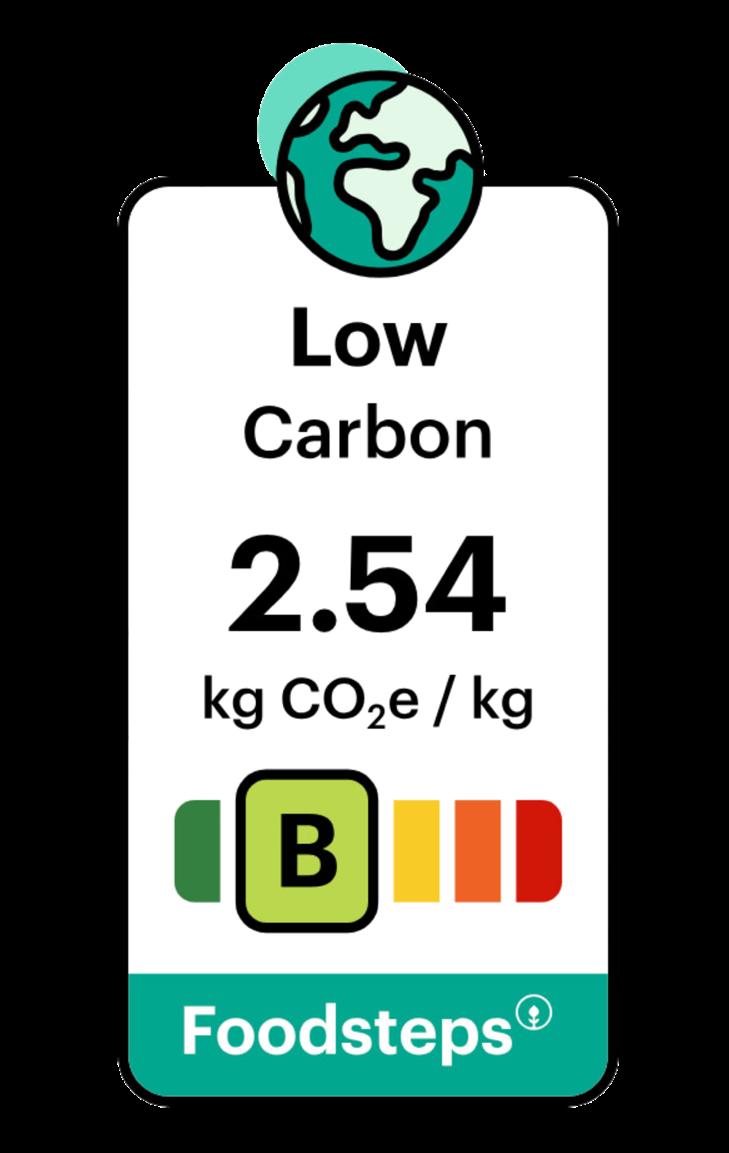
Primary School: 10 portions | Secondary School: 7 portions
Prep time: 45 mins
Cook time: 1 hour 15 mins
Total time: 2 hours
Ingredients:
• 500g bread
• 500g dried mixed fruit
• 35g mixed spice
• 600ml milk
• 2 beaten eggs
• 150g brown sugar
• 30g granulated sugar
• 100g melted butter
Method:
1. Line and butter a baking tray. Preheat your oven to 180°C/350°F
2. Break your bread into pieces, place into a large mixing bowl and pour over the milk. Give this a good stir and rest for about 30 minutes to allow the bread to soak up the milk and soften.
3. After 30 minutes, give the bread and milk a good mix. Add the beaten egg, mixed spice, sugar and melted butter. Mix all together and then add your dried fruit.
4. Pour mixture into your baking tray and sprinkle with sugar. Bake in the oven for approximately 1 hour and 15 minutes until the top is golden brown and feels firm to the touch in the centre
5. Once cooked, leave to cool until just warm. Sprinkle with a little more sugar and cut into squares.
“This is a wonderful way to transform leftover bread into a sweet, dense fruit cake. The cake boasts a crisp, golden crust and is filled with soft, rich fruit, infused with warming, festive spices.”
Katrina Lane Senior Client Relationship Manager at allmanhall


Image for illustrative purposes only.
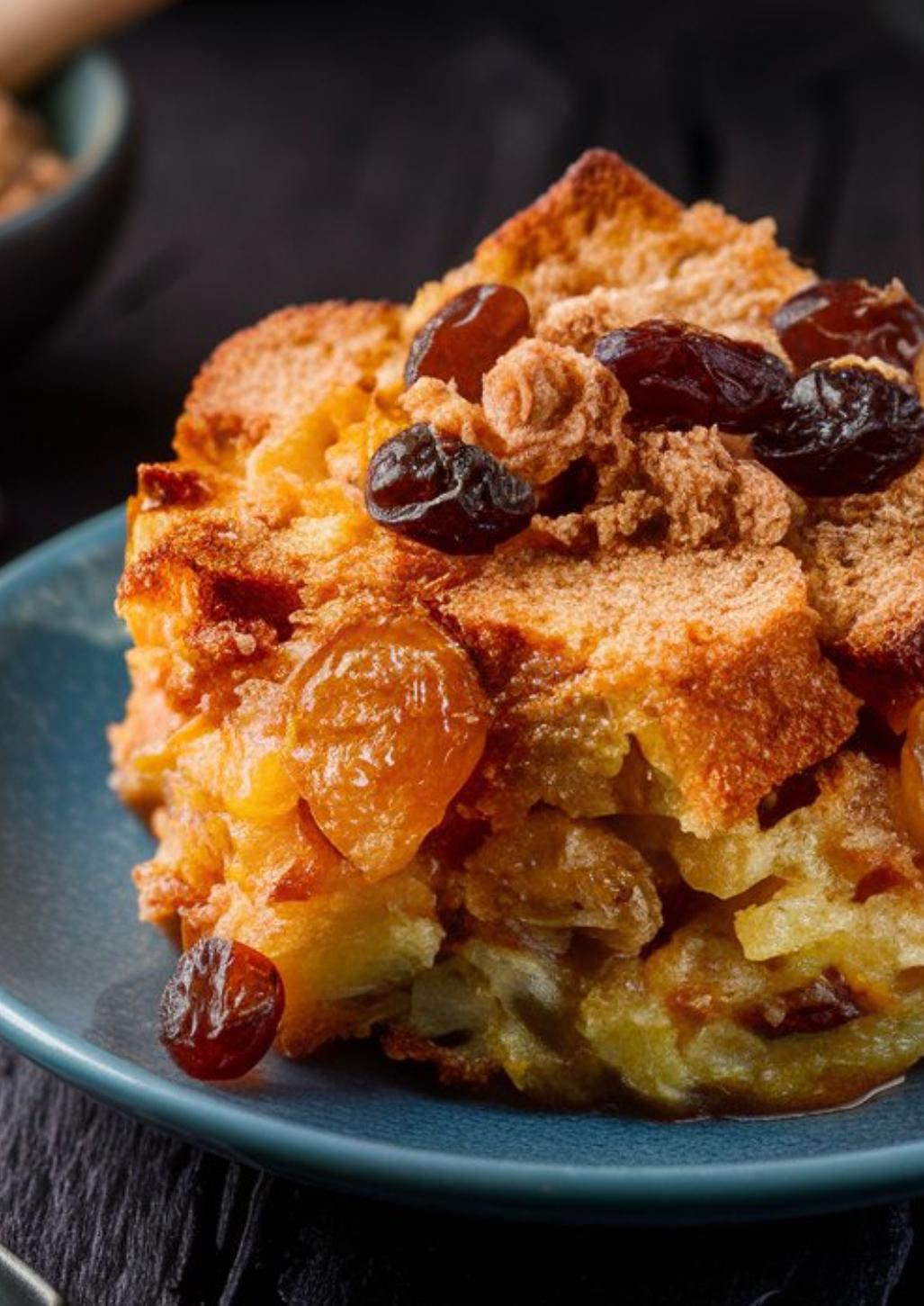
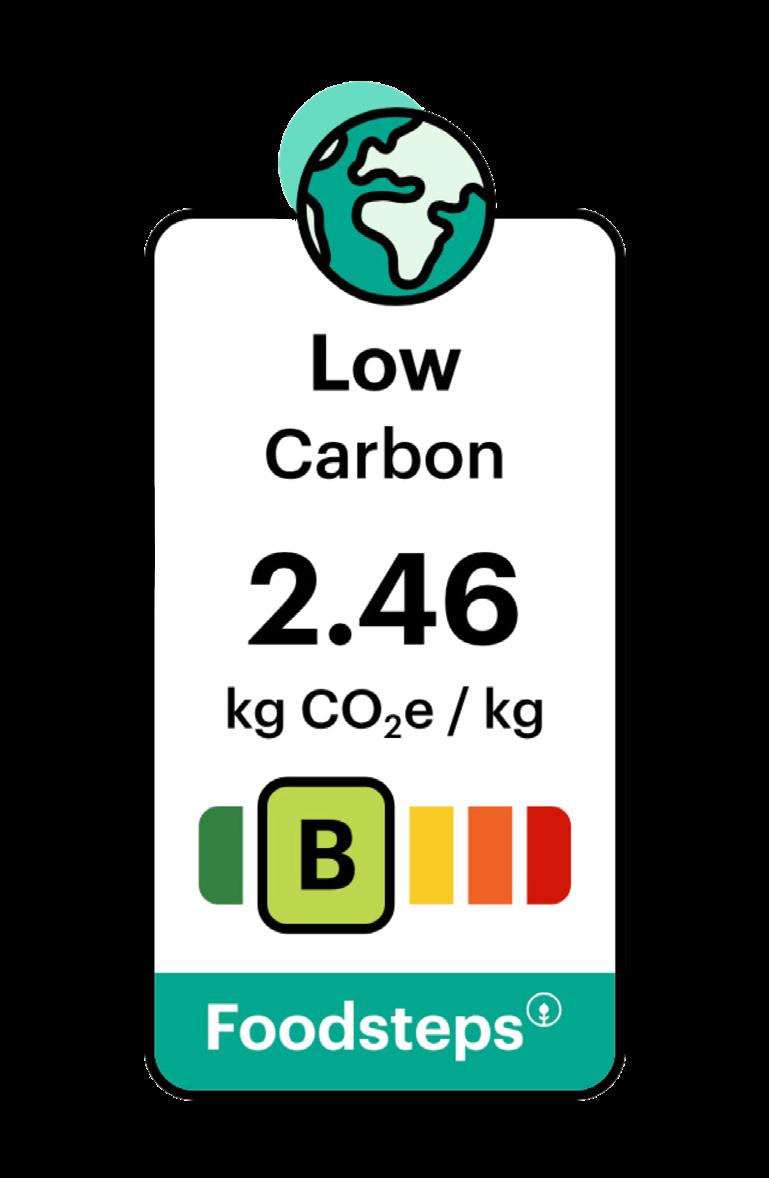
Primary School: 10 portions | Secondary School: 7 portions
Prep time: 20 mins
Cook time: 20 mins
Total time: 40 mins
• 150g plain flour
• 1 tsp baking powder
• 1/2 tsp ground cinnamon
• 2 free-range eggs
• 80ml rapeseed oil
• 40g caster sugar
• 1/2 vanilla essence
• 110g grated carrots
• 100g grated apple
• 50g pumpkin seeds
• 50g sultanas
• Small amount of desiccated coconut (optional)
1. Preheat the oven to 190°c/170°c Fan/Gas Mark 5. Line a muffin tray with paper cases.
2. Sift together the flour, baking powder and cinnamon.
3. In a large mixing bowl, whisk together the eggs, oil, sugar and vanilla.
4. Gently fold in the grated carrot and apple, seeds, sultanas and then the sifted flour mixture. Do not overmix, and don’t worry if the batter is lumpy and irregular.
5. Spoon into the lined tins and sprinkle some coconut over each muffin. Bake for about 25 minutes, until a skewer inserted in the centre comes out clean. Remove the muffins from the tins when they’re just warm and allow them to cool down on a wire rack before serving.
This recipe was provided by allmanhall's charity partner, Jamie's Farm. They transform lives through a unique residential programme built around the core elements of Farming, Family, Therapy and Legacy.
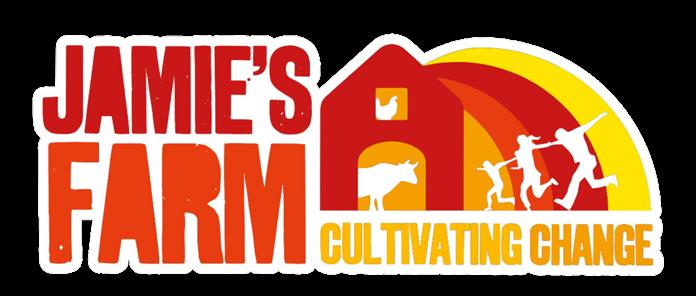

Image for illustrative purposes only.

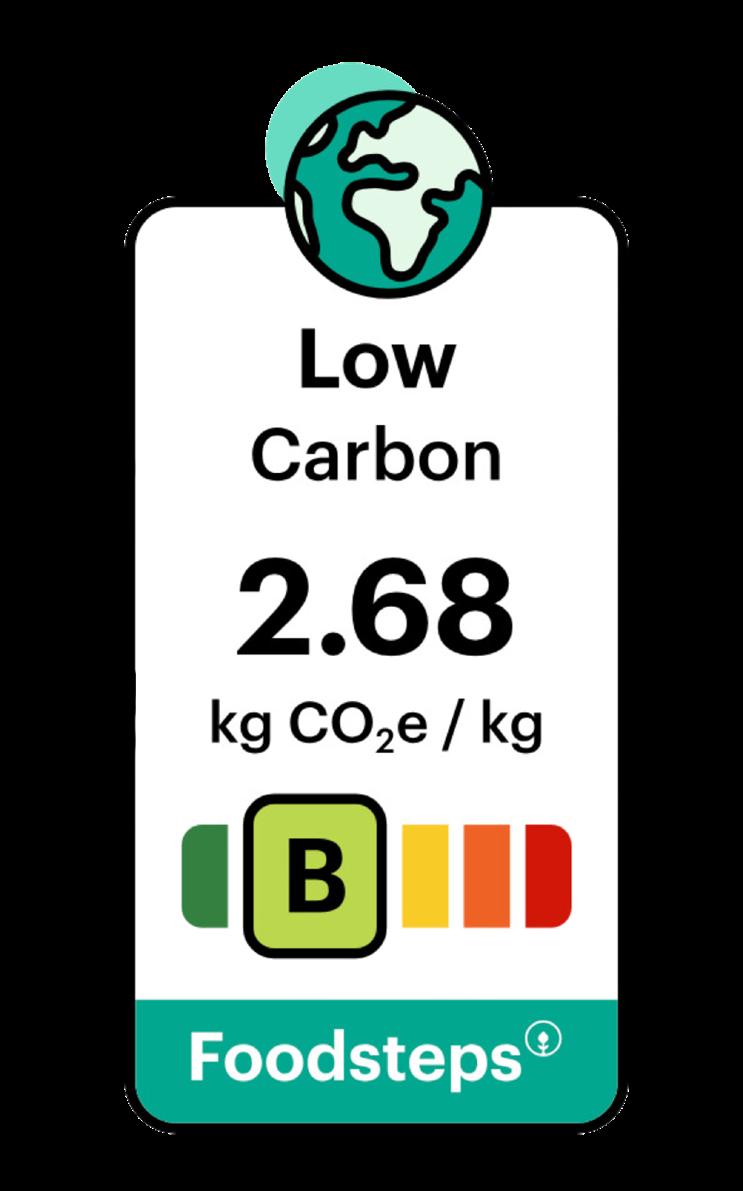
Primary School: 10 portions | Secondary School: 7 portions
Prep time: 5 mins
Cook time: 30 mins
Total time: 35 mins
Ingredients:
• 520g pear halves in juice
• 100g margarine
• 100g caster sugar
• 2 free range medium eggs
• 80g self raising flour
• 20g cocoa powder (Do opt in for Fairtrade where possible)

Method:
1. Preheat the oven to 160°c.
2. Chop the pears into small pieces, then place drained pears into the bottom of an oven proof tray.
3. Place the spread and the sugar in a mixing bowl and beat until light and creamy.
4. Then add the eggs and whisk for 1 minute.
5. Add the flour and cocoa powder and whisk for a few more minutes.
6. Pour mixture over the pears and bake in the oven for 30 minutes until cooked in the center.
This dessert contains 50% fruit and uses cocoa powder for the rich, chocolatey flavour!
This recipe was provided by Bidfood. They have over 1,000 recipes available on their website: https://www.bidfood.co.uk/inspiration/recipes/



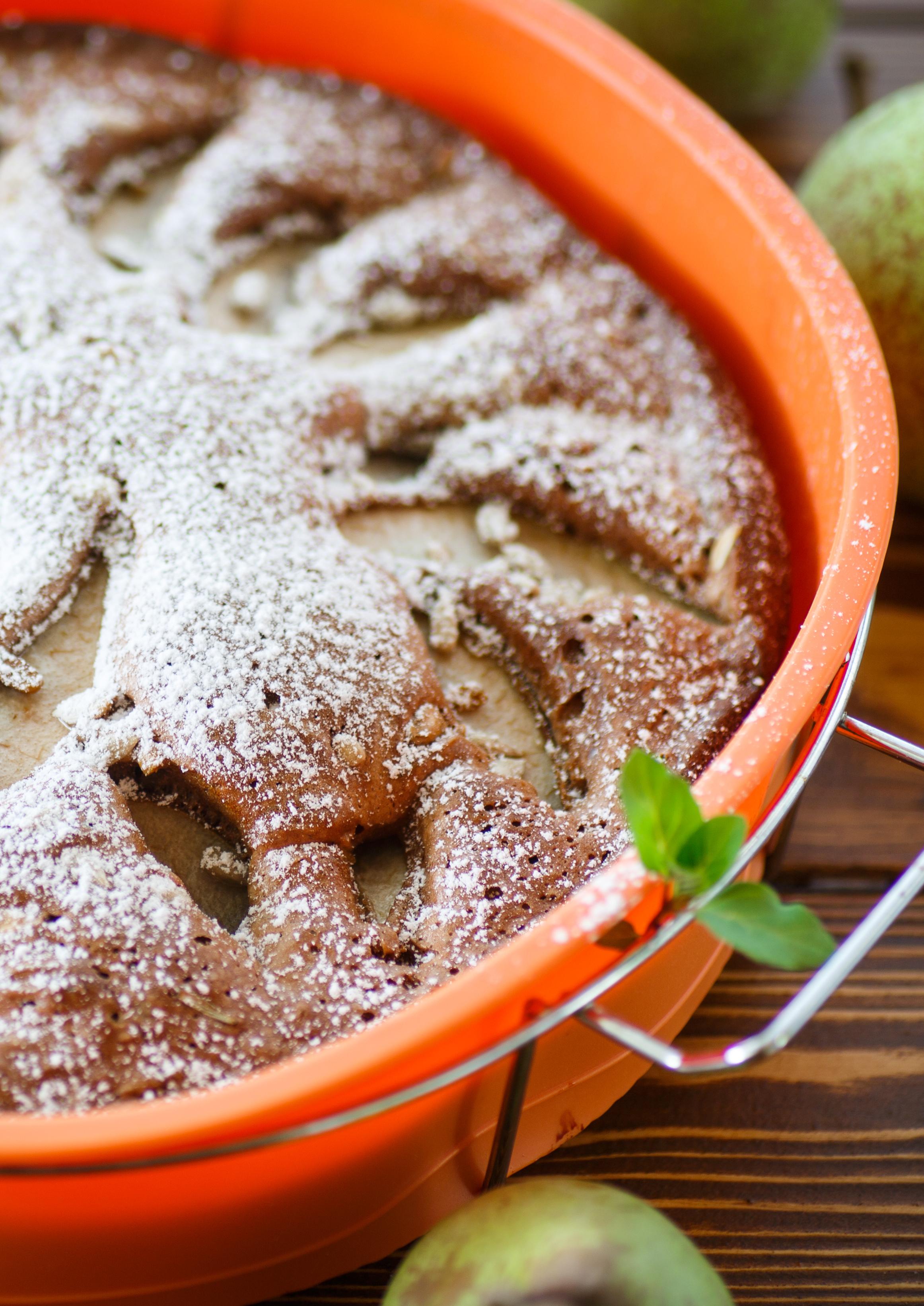
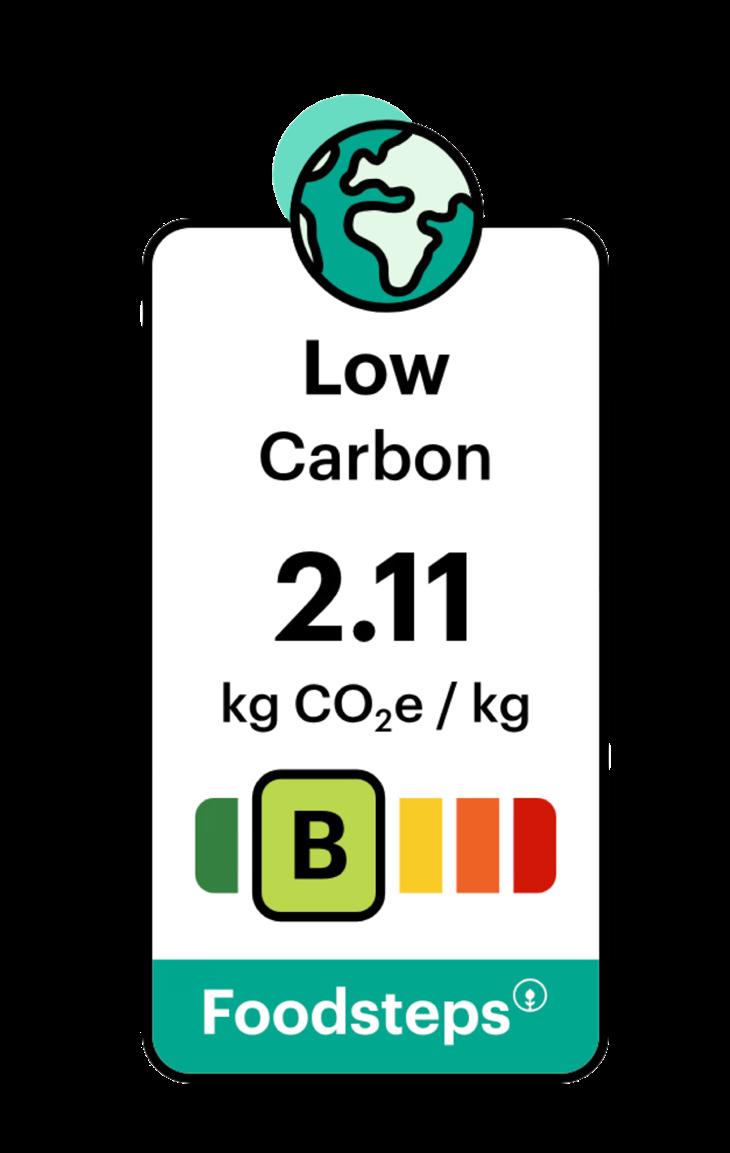
Primary School: 10 portions | Secondary School: 7 portions
Prep time: 15 mins
Cook time: 25 mins
Total time: 40 mins
Ingredients:
• 300g red apple
• 2 medium eggs
• 10ml vanilla flavouring
• 45g caster sugar
• 80ml olive oil
• 160g wholemeal flour
• 250g frozen raspberries
• 10g gluten free baking powder

Method:
1. Preheat the oven to 180°c and grease an oven proof tray.
2. Grate the apple into a bowl.
3. Add the eggs, vanilla flavouring, sugar, oil and mix well.
4. Whisk in the flour and baking powder.
5. Then fold through the raspberries and pour the mixture into a tray.
6. Bake in a hot oven for 25 minutes then allow to cool before serving.
This recipe contains 50% fruit, the school food standards state two desserts a week should be 50% (or more) fruit.
This recipe was provided by Bidfood. They have over 1,000 recipes available on their website:
https://www.bidfood.co.uk/inspiration/recipes/


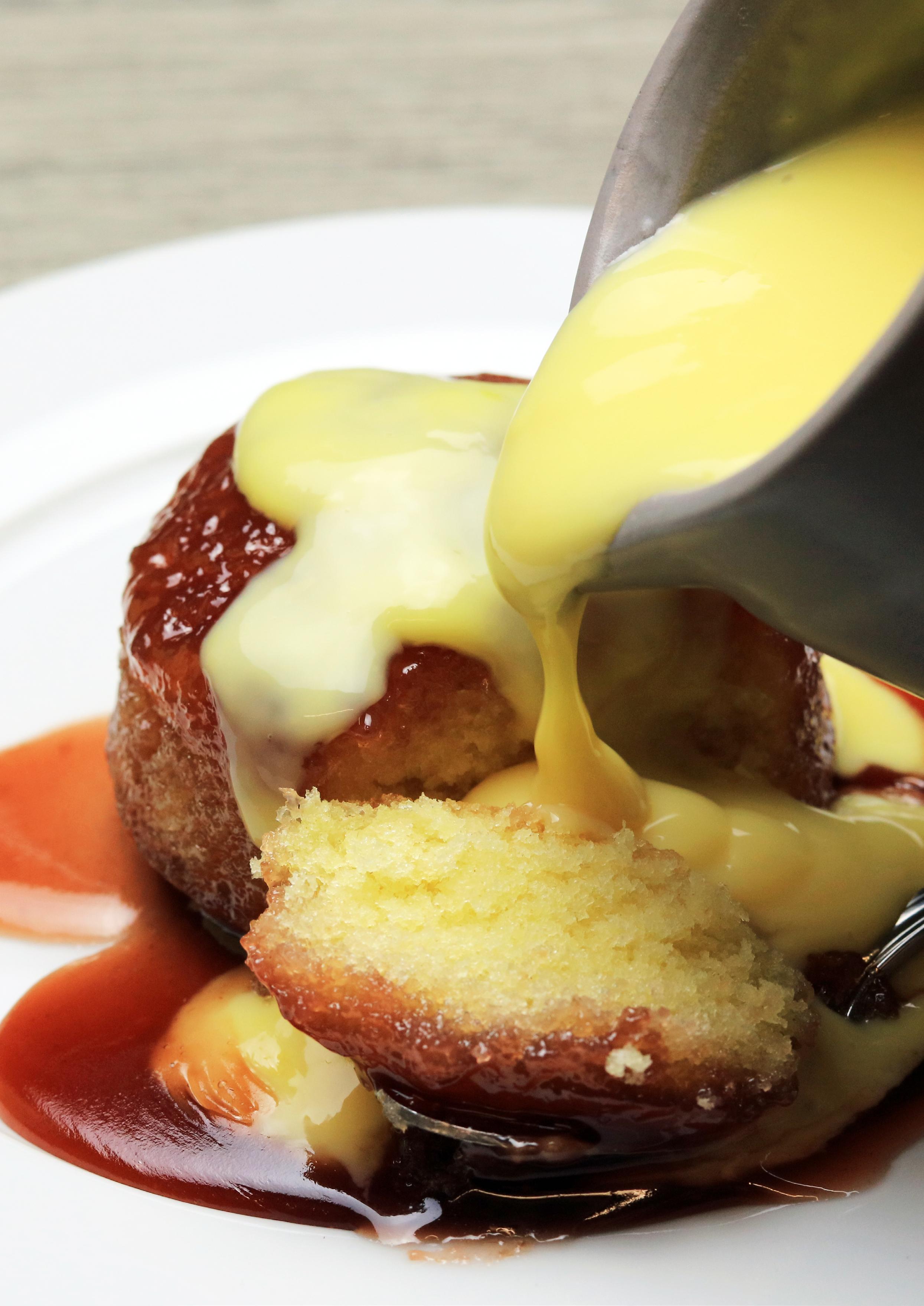

Waste reduction initiatives brought to you in partnership with Metcalfe Catering Equipment’s Jamie Clews.


Thinking outside of the box will not only provide new and inspiring flavours but also reduce your costs and carbon footprint.
Save those potato peelings and roast them off in the oven, or combi with a seasoning of your choice. They are full of flavour and fibre.
A great alternative to chips or fries. Alternatively add them to a pie mix to boost the nutrition for free!
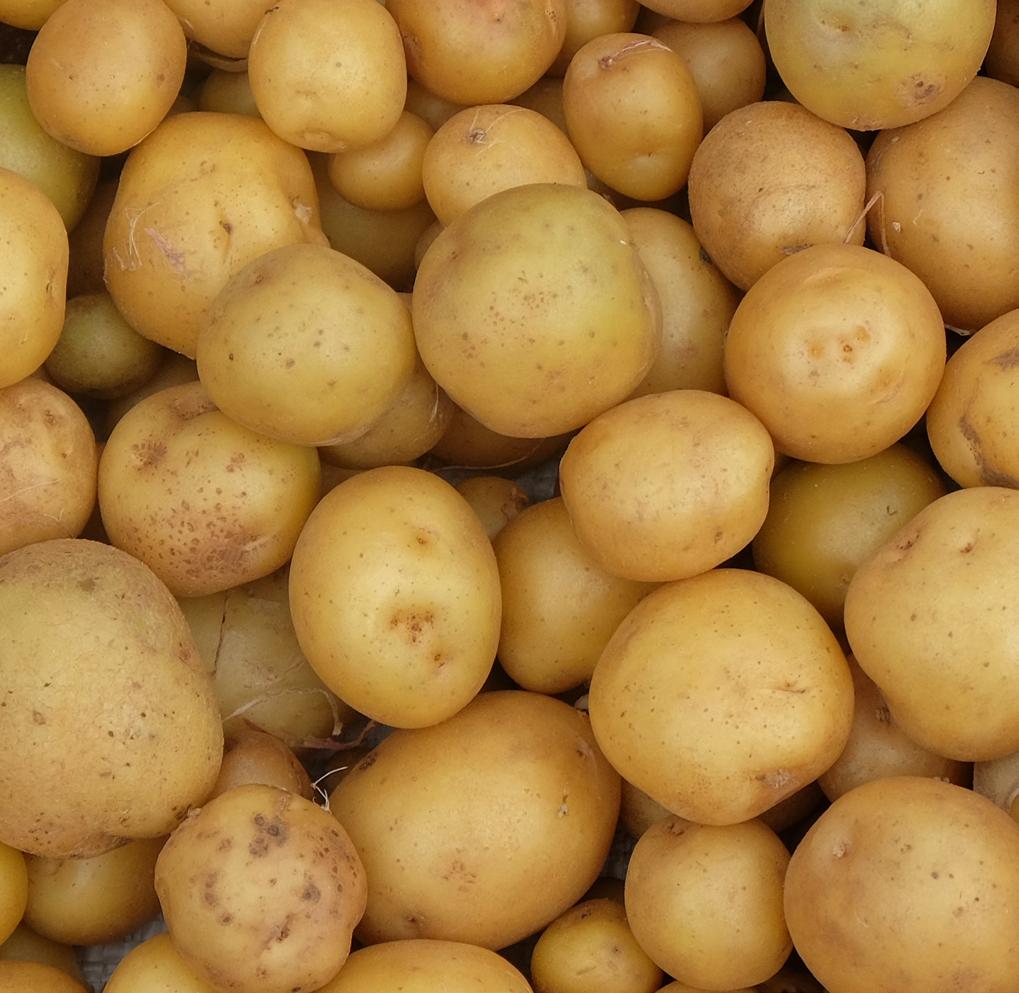


Those pesky ends left over from every tomato while making sandwiches or salad…
pop them in a ziplock bag and freeze till you have a large quantity, then add to a tomato sauce or stew for extra veg and less waste!
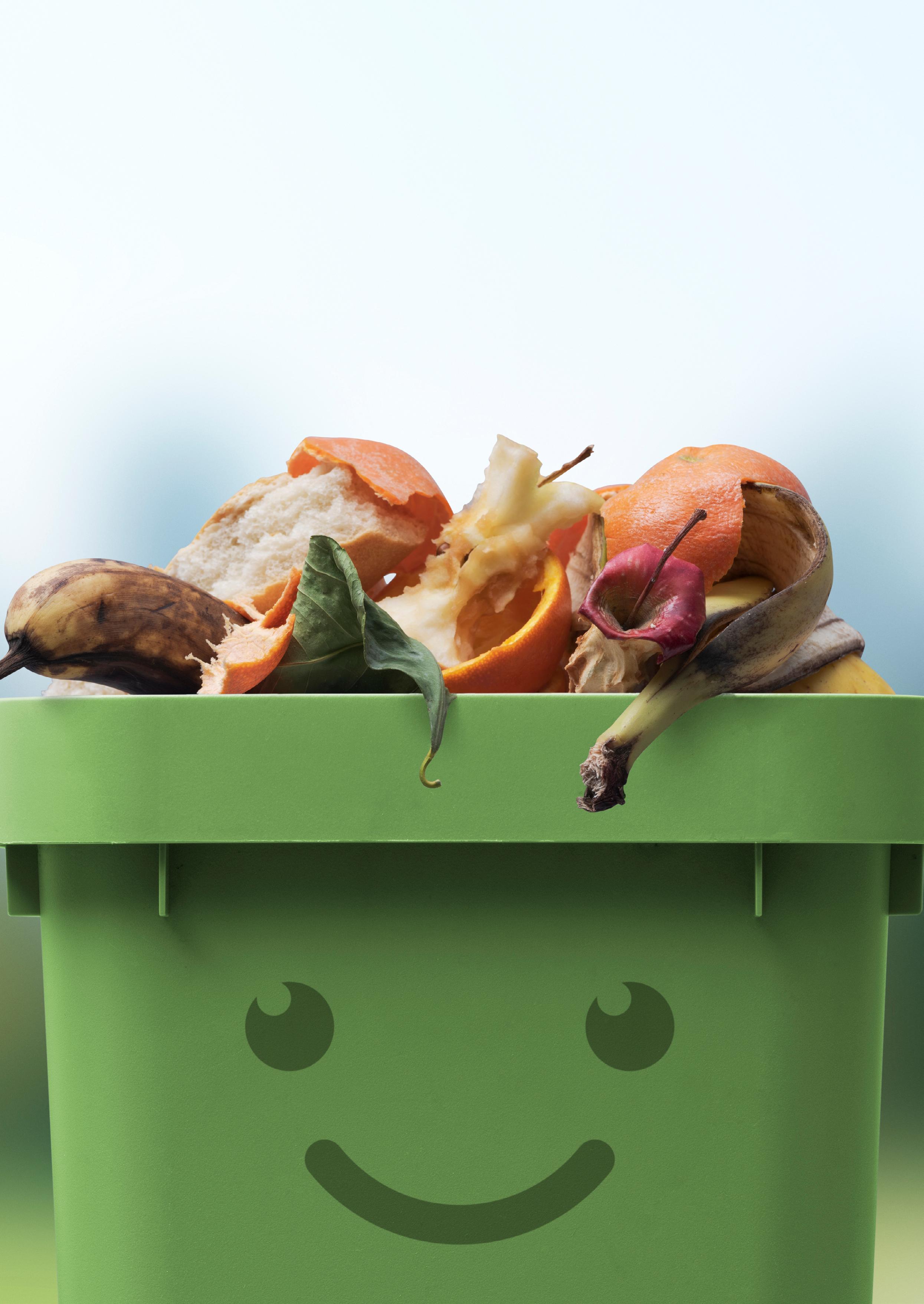
Mix crumble topping in a mixer and cook it separately. Add to the top of the cooked fruit by portion or the full tray.
Or you can store the topping in freezer / dry stores for a few weeks. Leftover fruit mix can be used as a compote, with some topping and yoghurt.
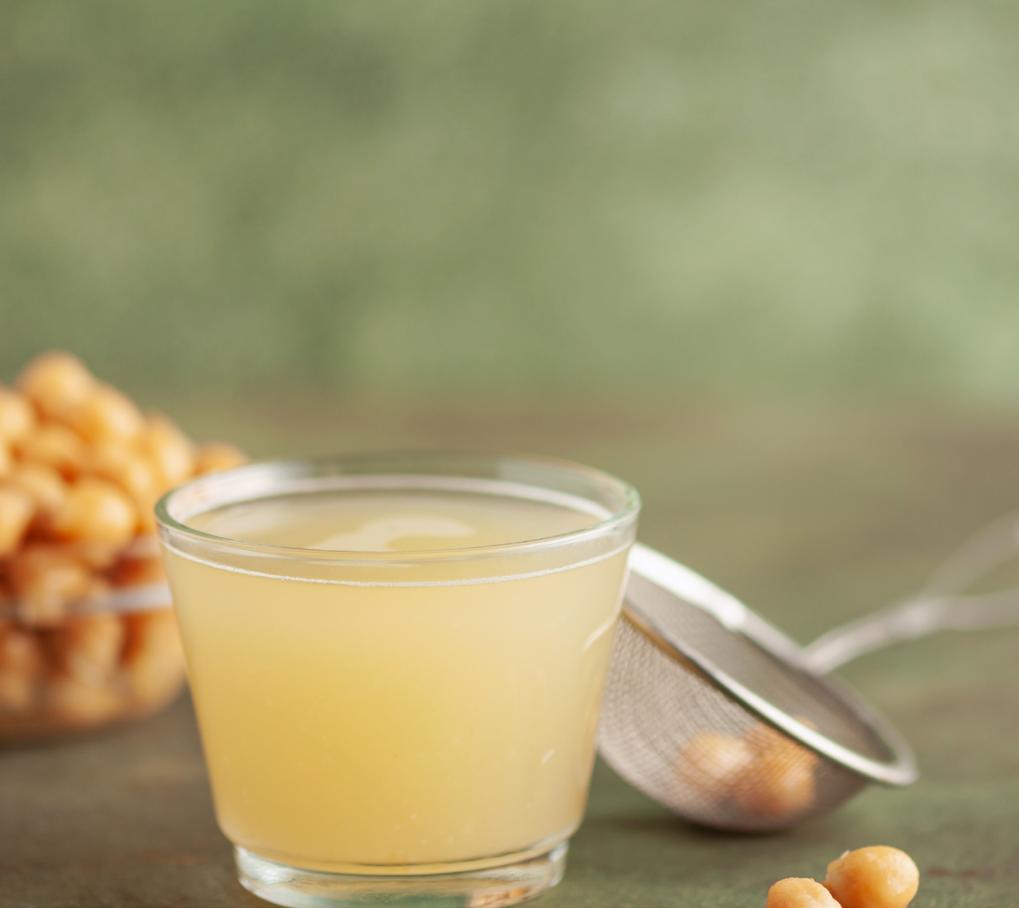
water aka aquafaba
Save the water from your tins of chickpeas. Either use straight away or freeze in ice cube trays to use later.
It works as an excellent egg-white replacement.
